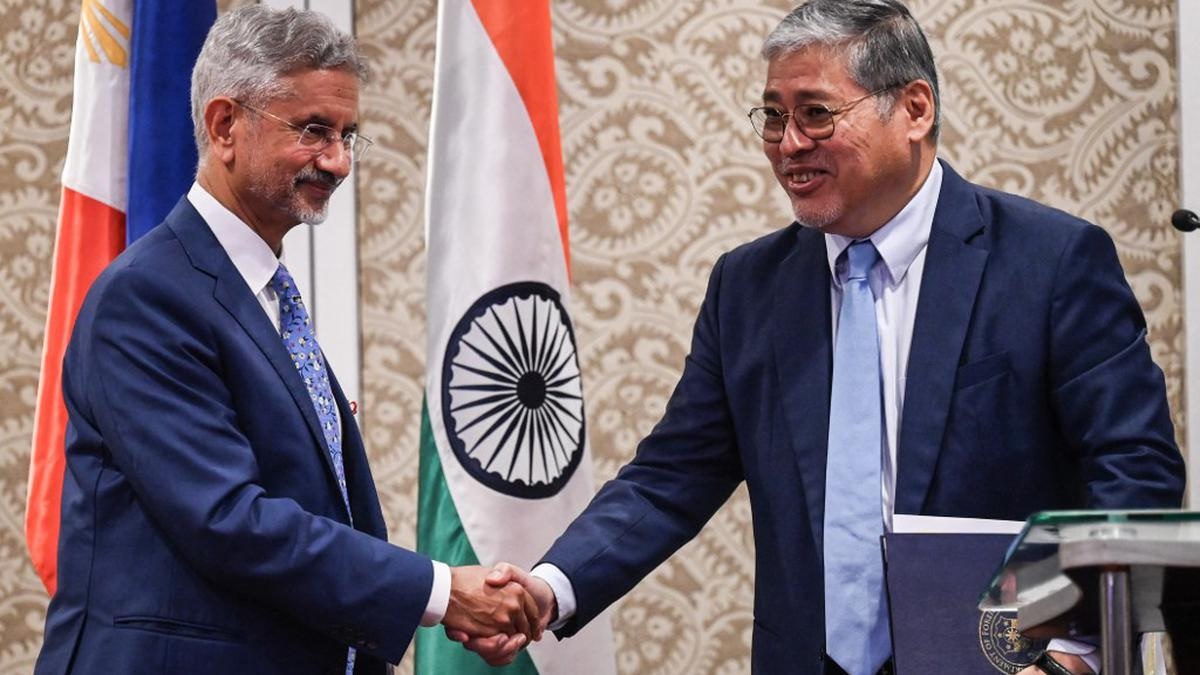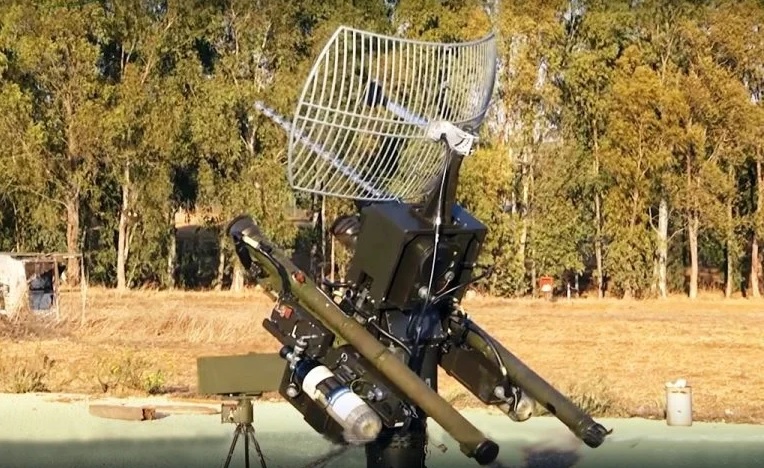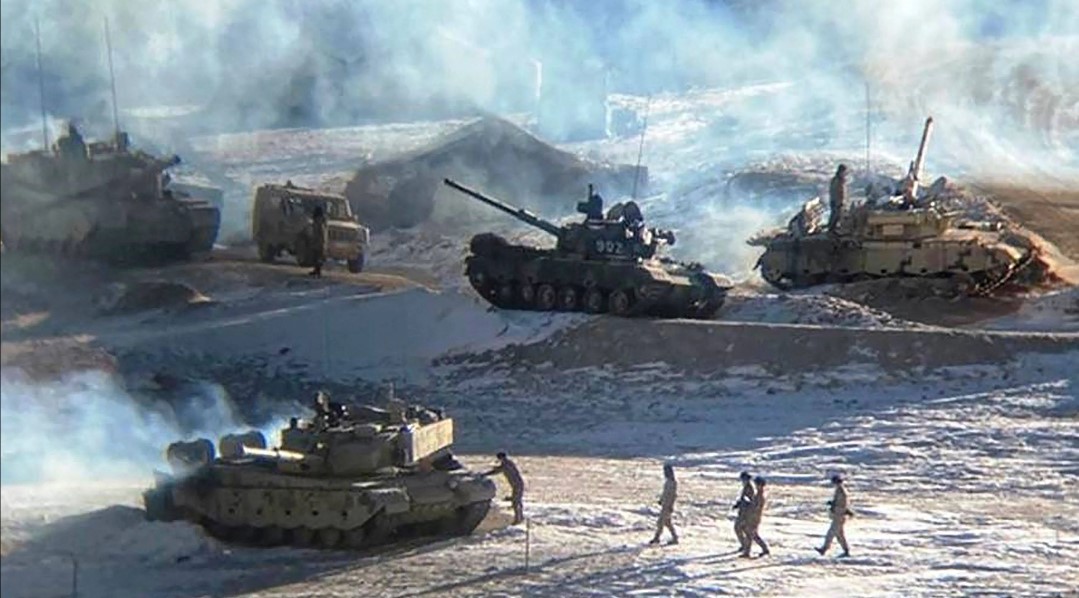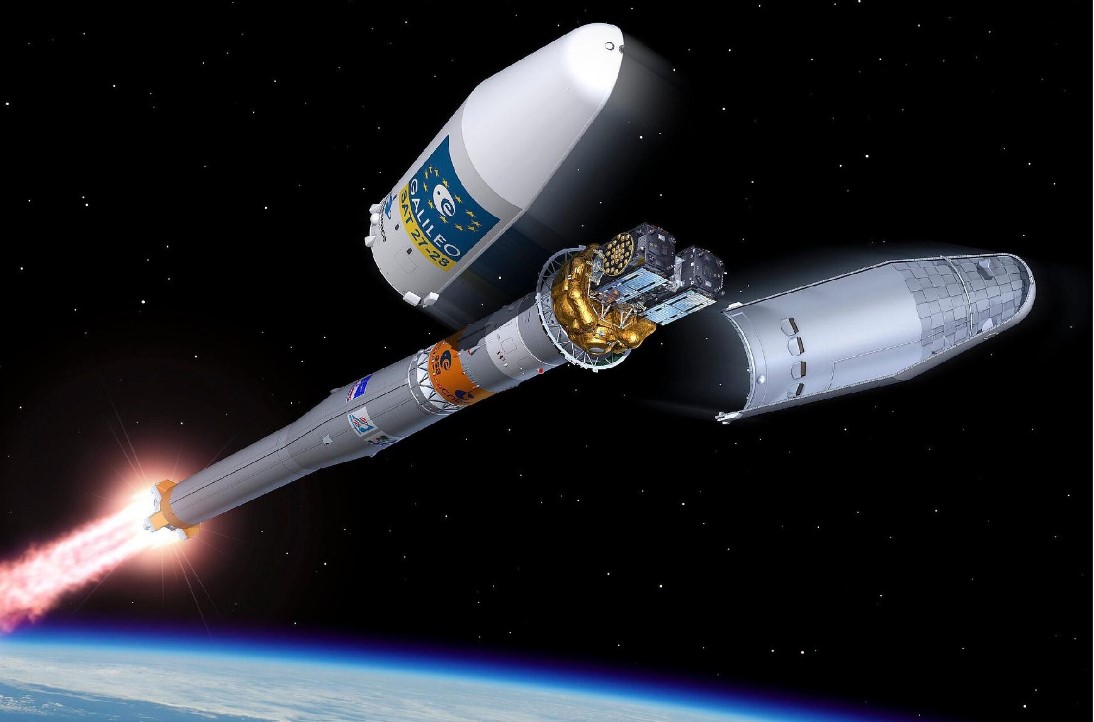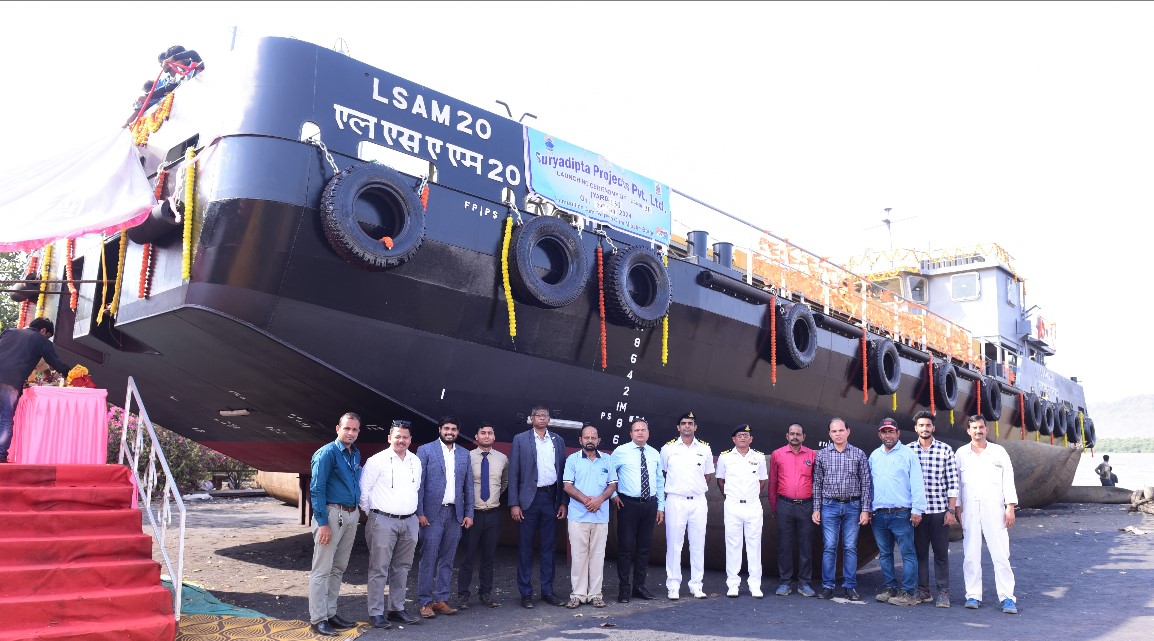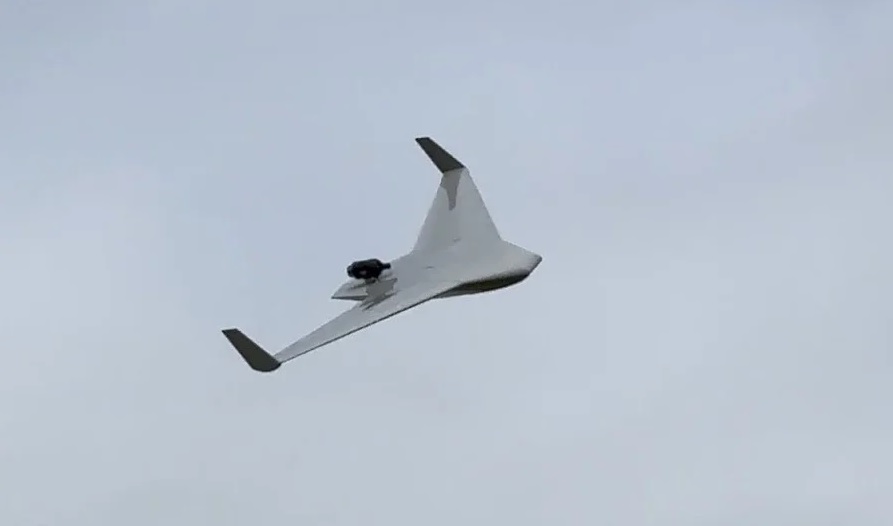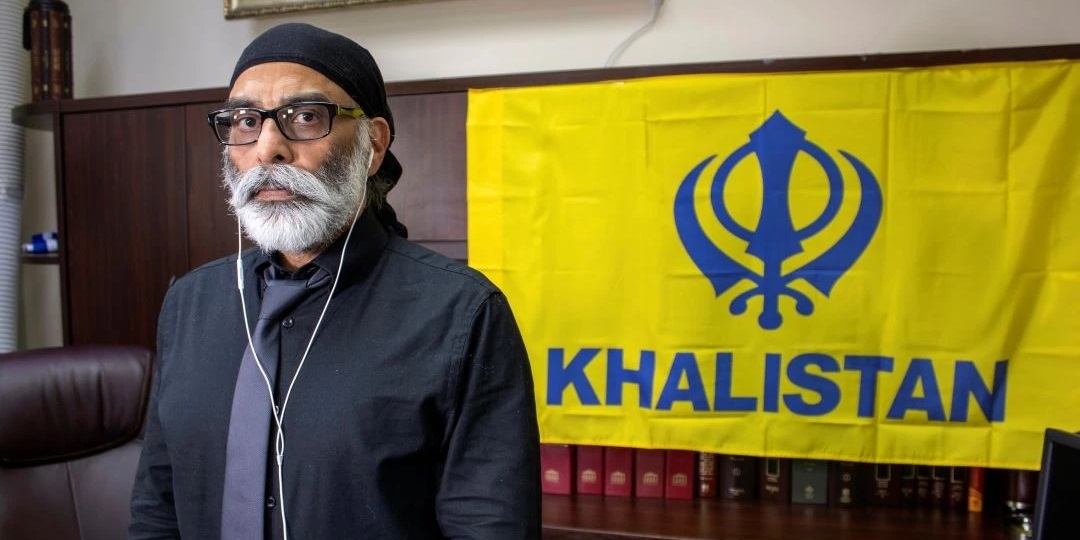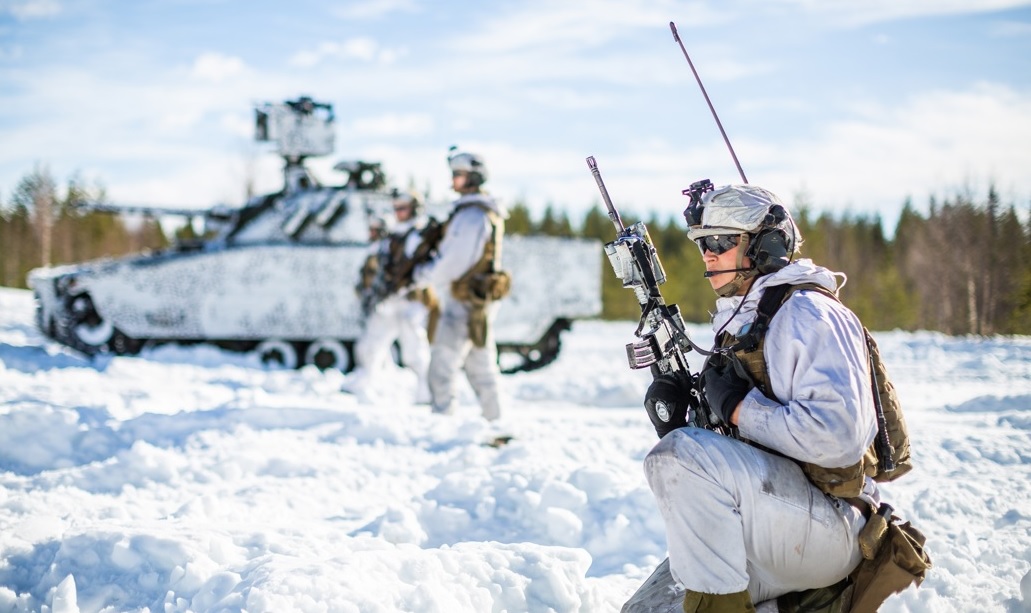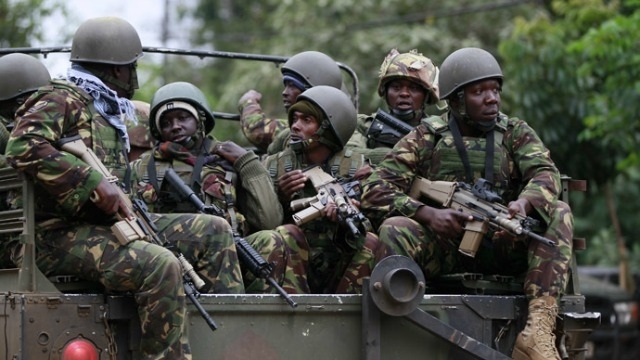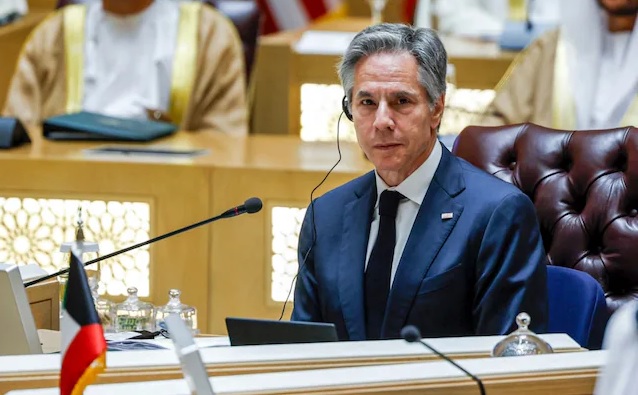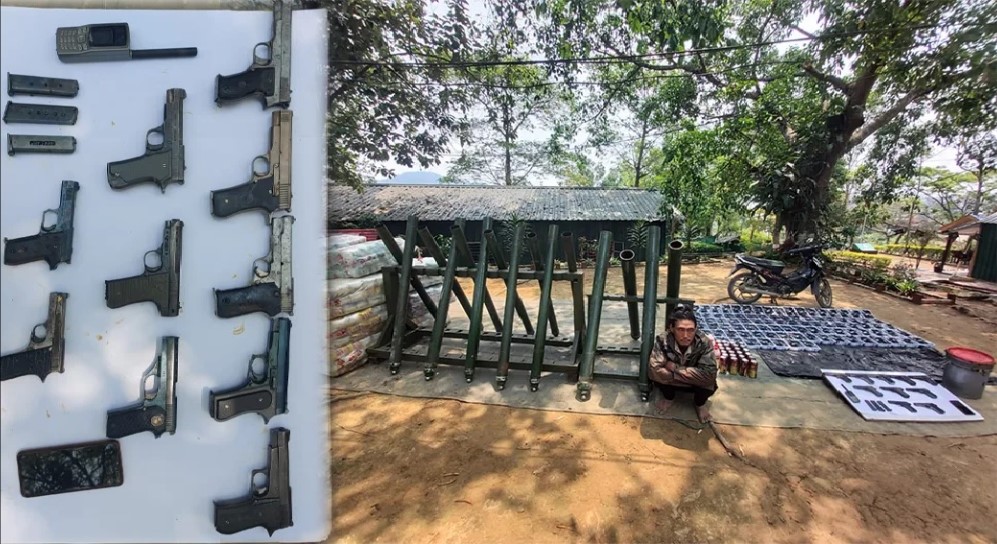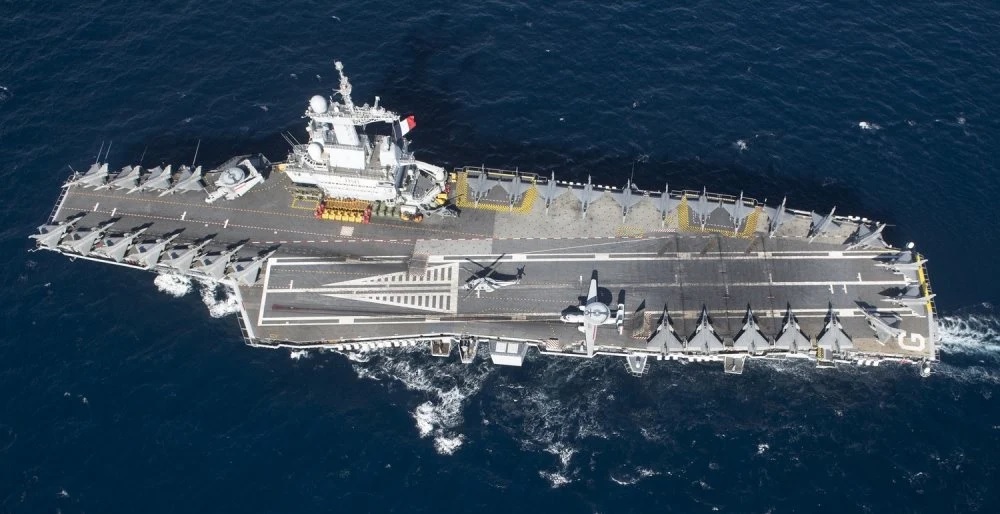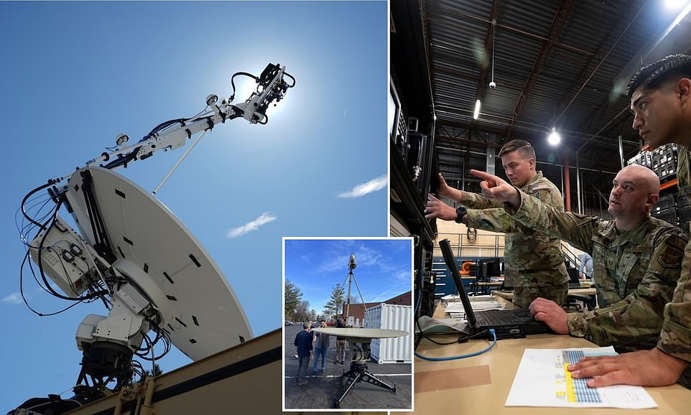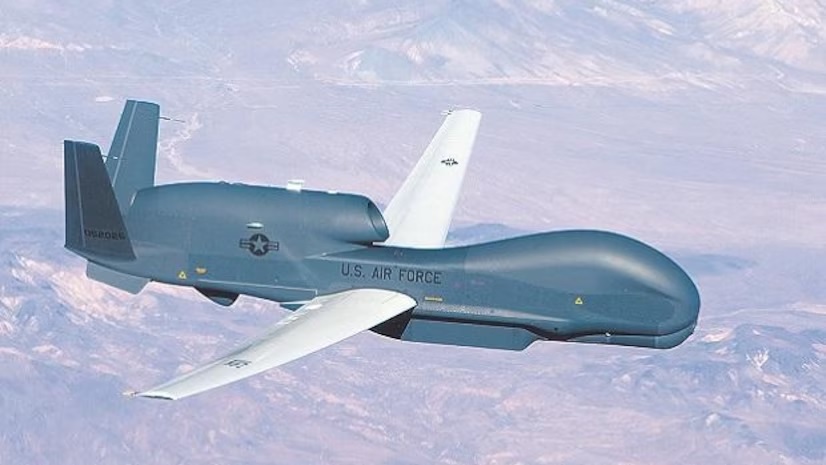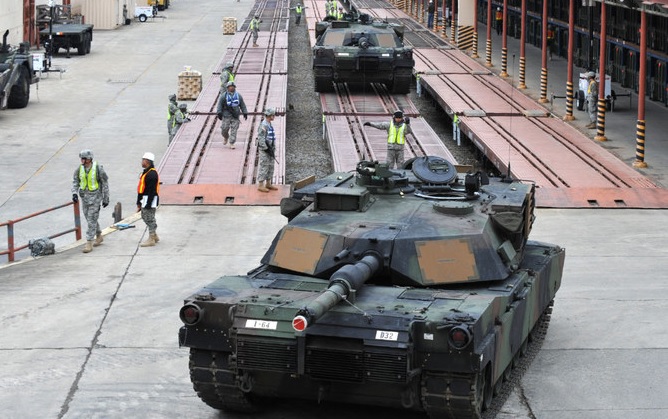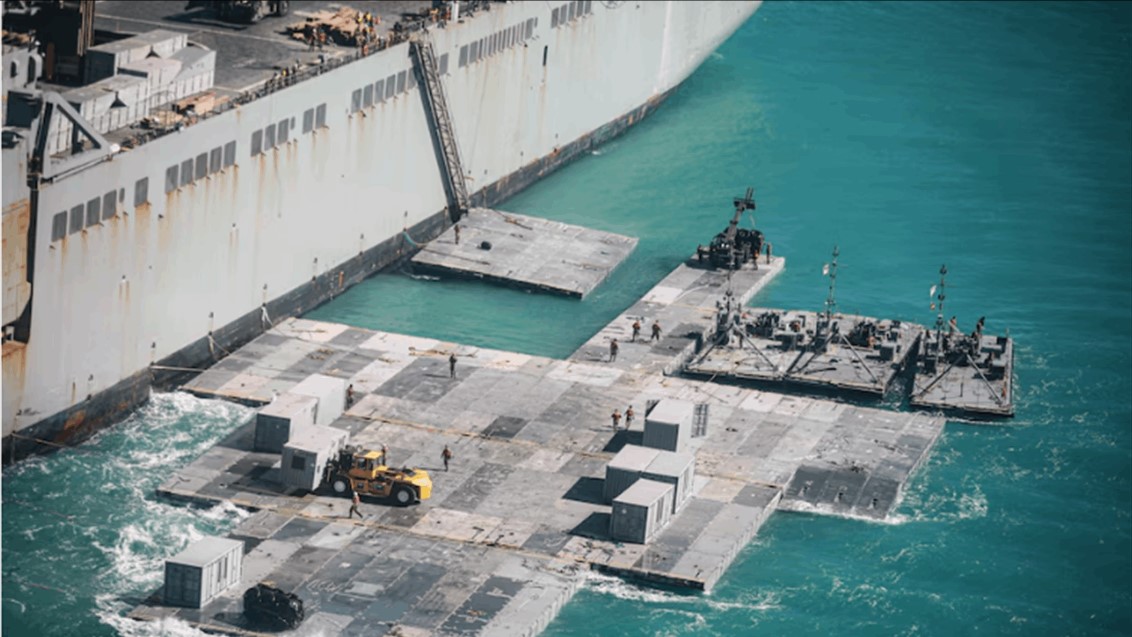India
India ,PhillippineIndia appoints its inaugural defense attaché to the Philippines, signaling a strategic move amid rising tensions in the Indo-Pacific, particularly in the South China Sea, underscoring both nations' commitment to regional security and stability.In a significant stride towards bolstering Indo-Pacific cooperation, India prepares to dispatch its inaugural defence attaché to the Philippines, marking a pivotal moment in the evolving geopolitical landscape of the region. Scheduled to assume duties within the forthcoming three to four months, pending final clearance from the Defence Minister's office, this appointment underscores India's strategic endeavor to shape a narrative in the Indo-Pacific domain.The backdrop against which this development unfolds is characterized by escalating tensions in the South China Sea, propelled chiefly by China's assertive territorial claims. Central to these disputes are contested areas such as the Scarborough Shoal and the Second Thomas Shoal, exacerbating concerns particularly for nations like the Philippines within the ASEAN bloc.Despite a favorable ruling in 2016 by the Permanent Court of Arbitration, invalidating China's claims in the South China Sea, Beijing's refusal to acknowledge the verdict has perpetuated regional instability. Recent incidents, including the blockade of Philippine vessels and disruptions to resupply missions, underscore China's persistent provocations, prompting Manila to contemplate retaliatory measures.Against this backdrop of heightened tensions, the appointment of a defence attaché assumes paramount significance. Charged with monitoring military developments and fostering bilateral cooperation, the attaché's role becomes instrumental in navigating the complex dynamics of Indo-Pacific security.India's proactive engagement in the region is further underscored by the recent delivery of BrahMos supersonic cruise missiles to the Philippines, emblematic of burgeoning defense collaboration between the two nations. Facilitated by a $375-million agreement signed in 2022, this milestone signifies a tangible manifestation of India's commitment to enhancing regional security.Crucially, India's support for the Philippines extends beyond military cooperation, encompassing diplomatic solidarity in upholding Manila's sovereignty. During a recent visit to Manila, India's External Affairs Minister reaffirmed India's stance, emphasizing the imperative of maintaining a free and peaceful Indo-Pacific. This solidarity resonates with historical instances of India's backing during the Philippines' arbitration process with China, reflecting a longstanding commitment to shared principles of international law and maritime security.However, India's engagement with the Philippines is not a standalone endeavor but part of a broader strategic imperative to fortify ties with Southeast Asian nations. Rooted in the 'Act East' policy initiated in 2014, India's diplomatic outreach seeks to foster political, economic, and security cooperation across the region. While progress in engagement with the Philippines has been gradual, recent developments signal a concerted effort to deepen bilateral relations.At the ASEAN level, India's participation in mechanisms such as the Defence Ministers' Meeting (ADMM)-Plus underscores its commitment to regional stability and maritime security. Through fora like the ADMM-Plus, India reaffirms its adherence to international laws, including the United Nations Convention on the Law of the Sea (UNCLOS) 1982, underscoring its commitment to uphold freedom of navigation and lawful commerce.In light of India's own territorial disputes with China, notably in Eastern Ladakh, the alignment of interests between India and the Philippines assumes added significance. As both nations navigate their respective challenges posed by China's assertiveness, synergizing efforts becomes imperative to safeguarding shared interests and promoting regional stability.Moreover, the evolving political landscape in the Philippines, marked by a transition from China-leaning leadership to a regime keen on closer ties with the US, presents an opportune moment for India to deepen its engagement. With the ascent of Ferdinand Marcos Jr., who espouses a more pro-Western orientation, India finds a receptive partner in advancing its strategic objectives in the Indo-Pacific.In conclusion, the appointment of India's first defence attaché to the Philippines signifies a pivotal milestone in Indo-Pacific cooperation, underscoring India's commitment to fostering regional security and stability. Against the backdrop of escalating tensions fueled by China's assertive actions, bilateral collaboration between India and the Philippines assumes heightened significance, bolstered by shared principles of sovereignty and adherence to international law. As both nations navigate the complexities of the Indo-Pacific, concerted efforts towards enhancing defense cooperation and diplomatic solidarity remain imperative to safeguarding the region's collective interests and promoting a free and peaceful maritime domain.
Read More → Posted on 2024-04-30 16:02:17World
IsraelElbit Systems introduces Red Sky, a cutting-edge air defence system combining anti-drone capabilities with modular design for comprehensive protection against low-altitude aerial threats. With advanced missile launchers and integrated electronic warfare solutions, Red Sky offers flexible deployment tailored to specific operational needs.Elbit Systems, a leading Israeli defense technology company, has announced the development of their latest air defence system, Red Sky. This Tactical Very Short-range Air Defence (VSHORAD) System is specifically designed to provide protection against low-altitude aerial threats. With an international customer awarding a contract of approximately USD 50 million, Elbit Systems is set to deploy two Red Sky batteries over the next two years.The Red Sky system integrates both soft-kill and hard-kill defence capabilities, marking a significant advancement in Elbit Systems' portfolio. The inclusion of anti-aircraft missiles enhances the system's rate of intercepts, ensuring a robust defence mechanism against evolving threats.At the core of the Red Sky system is its modular and multilayered design, offering comprehensive defence coverage. The Missile Launcher Unit (MLU) operates remotely within the vehicle, equipped with Local Electro-Optical/Infrared (EO/IR) capabilities for autonomous operation and precision VSHORAD missile launching with a firing range of up to 7 kilometers.Complementing the MLU is the Battery Target Detection Radar (BTDR), featuring Central Surveillance Radar and advanced communication capabilities for seamless coordination with fire units. Additionally, the system incorporates Elbit Systems' Redrone, an electronic warfare (EW) solution designed to detect, identify, locate, and neutralize unmanned aerial systems. The Redrone system includes DAiR Radar, Signal Intelligence (SIGINT) sensors, RF Jammer, and COAPS-L electro-optical (EO) payload, providing an enhanced integrated aerial picture.The flexibility of the Red Sky system allows for independent operation of each component or seamless integration, catering to specific operational requirements. Whether deployed as independent fire units or integrated into a regional defence framework, Elbit's Red Sky system offers comprehensive protection with integrated Command and Control.Yehuda (Udi) Vered, General Manager of Elbit Systems Land, emphasized the system's affordability and effectiveness in addressing the urgent need to defend borders and secure strategic assets against diverse aerial threats. Vered highlighted the collaborative effort within Elbit Systems, leveraging existing building blocks to create a comprehensive solution incorporating new anti-aircraft missiles and advanced soft-kill defence mechanisms.In conclusion, Elbit Systems' Red Sky Air Defence System represents a significant advancement in countering aerial threats. With its state-of-the-art technology and comprehensive defence coverage, Red Sky stands as a testament to Elbit Systems' commitment to providing innovative solutions for national and international security challenges.
Read More → Posted on 2024-04-30 15:54:54World
IsraelIsraeli Prime Minister Benjamin Netanyahu pledges to launch an offensive in Gaza's Rafah, vowing to achieve "total victory" in the conflict with Hamas amid cease-fire negotiations. Netanyahu faces pressure to act decisively, emphasizing the necessity of eliminating Hamas' stronghold in Rafah.Israeli Prime Minister Benjamin Netanyahu pledged Tuesday to launch an incursion into the southern Gaza city of Rafah, where hundreds of thousands of Palestinians are sheltering from the 7-month-long war.Netanyahu said Israel would enter Rafah to destroy Hamas' battalions there "with or without a deal." Israel and Hamas are negotiating a cease-fire agreement meant to free hostages and bring some relief to the Palestinians in the besieged enclave."The idea that we will stop the war before achieving all of its goals is out of the questions. We will enter Rafah and we will eliminate Hamas' battalions there - with a deal or without a deal, to achieve the total victory," Netanyahu said in a meeting with families of hostages held by militants in Gaza, according to a statement from his office.Netanyahu has vowed to achieve "total victory" in the war and has faced pressure from his nationalist governing partners to launch an offensive in Rafah, which Israel says is Hamas' last major stronghold.Hopes have risen in recent days that the sides could move toward a deal that would avert an Israeli incursion into Rafah, where more than half of Gaza's 2.3 million population are sheltering.The international community, including Israel's top ally, the U.S., have raised an alarm over the the fate of civilians in Rafah if Israel invades.Netanyahu has repeatedly rejected stopping the war in return for hostage releases, and says an offensive on Rafah is crucial to destroying the militants after their Oct. 7 attacks on Israel triggered the conflict. His government could be threatened if he agrees to a deal because hard-line Cabinet members have demanded an attack on Rafah.
Read More → Posted on 2024-04-30 15:45:27India
IndiaIndia draws crucial lessons from the Ukraine conflict, emphasizing the need to bolster artillery, drone, and cyberwarfare capabilities amidst escalating tensions with China and Pakistan. Insights gleaned inform strategic modernization efforts aimed at ensuring national security in diverse terrain and evolving threat landscapes.In recent years, as tensions simmer between India and its neighboring adversaries, China and Pakistan, the Indian defense establishment has been closely monitoring the unfolding conflict in Ukraine. With a keen eye on understanding the dynamics of modern warfare and preparing for potential future scenarios, Indian experts have been drawing insightful lessons from the Ukrainian conflict.A key observation is the paramount importance of artillery, drones, and cyberwarfare capabilities in modern warfare. The Indian defense apparatus, comprising approximately 1.5 million personnel, armed with a diverse array of equipment from various sources, including indigenous designs and imports from both Eastern and Western nations, is undergoing a process of modernization and standardization.The Ukraine conflict serves as a pertinent case study, albeit with notable differences. While Ukraine faces a singular major adversary in Russia, India must navigate the challenges posed by both Pakistan to the west and an increasingly assertive China to the northwest. Moreover, India's diverse terrain, ranging from deserts to jungles and towering mountains, presents unique challenges for military operations.Artillery has emerged as a decisive factor in the Ukraine conflict, underscoring the need for plentiful and modern artillery capabilities. The deluge of firepower unleashed by both sides has forced a shift towards trench warfare, highlighting the critical role of artillery in shaping the battlefield. Indian observers have taken note, emphasizing the importance of firepower as a "battle-winning factor" and the need for reduced response times in target acquisition and engagement.In response, India is already in the process of modernizing its artillery arsenal, with plans to transition to standard NATO caliber 155-mm howitzers and develop longer-range munitions. This move reflects a strategic shift towards enhancing artillery capabilities to meet the evolving demands of modern warfare.The air war over Ukraine has also yielded valuable insights, particularly regarding the role of drones and anti-aircraft systems. Despite Russian superiority in numbers and technology, anti-aircraft missiles have effectively deterred enemy air forces, necessitating a reevaluation of traditional air warfare tactics. Drones have emerged as indispensable assets, playing a pivotal role in reconnaissance, surveillance, and combat operations.Retired Indian Air Force officials advocate for a holistic approach to airpower, emphasizing the need to synchronize air, ground, and naval operations. Additionally, there is a growing imperative to develop counter-drone capabilities to mitigate the threat posed by mass drone attacks. This underscores the importance of innovation and adaptation in response to emerging threats in the modern battlefield.Cyberwarfare has become increasingly prevalent in conflicts, with Ukraine serving as a prime example of its significance. From hacking into military systems to disseminating propaganda, cyber capabilities play a multifaceted role in shaping the outcome of conflicts. Indian experts stress the need for investment in cyberwarfare capabilities to safeguard national interests and maintain strategic relevance in an increasingly digitized world.Furthermore, the deepening interplay between civilian organizations and the military underscores the evolving nature of modern warfare. Collaborations with tech companies and leveraging dual-use technologies like artificial intelligence (AI) are becoming integral components of defense strategies.In light of these lessons, India must prioritize the development of artillery, drone, and cyberwarfare capabilities to enhance its deterrence posture and safeguard national security interests. This entails a concerted effort to modernize the armed forces, streamline procurement processes, and foster strategic partnerships with tech-savvy allies.As India navigates the complexities of an uncertain geopolitical landscape, drawing from the experiences of conflicts like Ukraine provides valuable insights into the evolving nature of warfare and the imperative of adapting to emerging threats. By embracing innovation, fostering collaboration, and investing in cutting-edge technologies, India can bolster its defense capabilities and effectively deter potential adversaries, ensuring peace and stability in the region.In conclusion, the lessons learned from the Ukraine conflict serve as a blueprint for India's defense modernization efforts, guiding strategic decisions and shaping the future trajectory of its armed forces in an increasingly volatile world.
Read More → Posted on 2024-04-30 15:40:57India
IndiaAdmiral Dinesh Kumar Tripathi, a seasoned communication and electronic warfare specialist, assumes command as the 26th Chief of the Indian Navy, succeeding Admiral R Hari Kumar. With nearly four decades of exemplary service and a distinguished career trajectory, Admiral Tripathi brings extensive leadership experience and strategic insight to his new role.On Tuesday, Admiral Dinesh Kumar Tripathi took charge as the 26th Chief of the Indian Navy, succeeding Admiral R Hari Kumar upon his retirement. With a career steeped in dedication and expertise, Admiral Tripathi brings a wealth of experience to his new role.An alumnus of Sainik School Rewa, Admiral Tripathi's journey began with his commission into the executive branch of the Indian Navy in 1985. Throughout his nearly four-decade-long career, he has showcased exemplary leadership and proficiency in communication and electronic warfare.Before assuming the position of Vice Chief of the Naval Staff, Admiral Tripathi served as the Flag Officer Commanding-in-Chief of the Western Naval Command. His command experience includes leading Indian Naval Ships Vinash, Kirch, and Trishul, demonstrating his adeptness in operational roles.Admiral Tripathi's career is marked by significant appointments, including Fleet Operations Officer of the Western Fleet, Director of Naval Operations, and Commandant of the prestigious Indian Naval Academy, Ezhimala. His tenure as Rear Admiral saw him command the Eastern Fleet, further enhancing his strategic acumen.Education has been a cornerstone of Admiral Tripathi's career. A graduate of the National Defence Academy and a recipient of advanced training from institutions such as the Defence Services Staff College and Naval Command College in the United States, he embodies the ethos of lifelong learning and professional development.Recognized for his contributions, Admiral Tripathi has been honored with the Ati Vishisht Seva Medal (AVSM) and Nau Sena Medal (NM), underscoring his commitment to service and excellence.As Admiral Hari Kumar bids farewell to the Navy after a distinguished career spanning four decades, Admiral Tripathi steps into his new role with a vision of safeguarding India's maritime interests and ensuring the Navy's continued readiness to meet evolving challenges.Under his leadership, the Indian Navy is poised to navigate the complexities of the maritime domain with diligence, professionalism, and unwavering resolve. Admiral Dinesh Kumar Tripathi's assumption as the Navy chief heralds a new chapter in the illustrious history of the Indian Navy, promising continued strength and vigilance on the high seas.
Read More → Posted on 2024-04-30 15:34:20World
EuropeEU strengthens Galileo satellite system with successful launch of two new satellites, enhancing global positioning reliability and supporting critical sectors. Continuing investments in navigation infrastructure underscore commitment to economic growth and security.In the early hours of Sunday, April 28, 2024, a significant milestone was achieved in the ongoing enhancement of the Galileo satellite constellation. At precisely 2:34 AM CEST, two new Galileo satellites were successfully positioned in orbit, marking another step forward in ensuring the reliability and precision of global positioning information for users worldwide.With nearly half of the world's population already relying on Galileo services, this latest deployment reinforces the EU's commitment to maintaining the integrity and functionality of the satellite navigation system. Over the past decade, the European Union has consistently invested in the expansion and optimization of the Galileo constellation to support a wide range of critical sectors, including agriculture, energy, aviation, and defense.The significance of satellite navigation in modern economies cannot be overstated. Approximately 10% of the EU's annual gross domestic product is linked to satellite-based positioning and timing information, a figure that is only expected to grow in the years ahead. The deployment of these two new satellites contributes to the resilience and efficiency of Galileo services, providing users with reliable access to vital data for their operations and activities.Notably, the recent launch comes on the heels of the introduction of the new Public Regulated Service (PRS) signals, which offer enhanced security and adaptability for authorized governmental users and sensitive applications. The implementation of encrypted navigation services underscores the EU's commitment to safeguarding critical infrastructure and ensuring the integrity of Galileo services in the face of evolving threats.Looking forward, plans are already underway for the next phase of Galileo's evolution. Twelve second-generation (G2G) satellites are currently in production, with the first launch expected in 2026 using an Ariane-6 launcher. The successful completion of the maiden flight of the Ariane-6 in 2024 has paved the way for further launches, with the European Commission poised to order two additional Ariane-6 launches in the coming months.As the Galileo constellation continues to expand and evolve, it remains a cornerstone of the EU's efforts to foster innovation, support economic growth, and enhance security on a global scale. With each new satellite deployment and technological advancement, Galileo reaffirms its position as a vital tool for navigation, timing, and positioning, driving progress and prosperity for users around the world.
Read More → Posted on 2024-04-30 15:12:42India
India The Indian Navy launches LSAM 20, the sixth barge of the 11 x ACTCM Barge Project, enhancing logistical support for naval operations. Built domestically, these barges signify India's commitment to self-reliance in defence production and bolstering maritime capabilities.The Indian Navy took a significant step forward in enhancing its operational capabilities with the launch of the LSAM 20 (Yard 130), the sixth barge of the 11 x ACTCM Barge Project. This milestone event, held on April 29, 2024, at M/s Suryadipta Projects Pvt Ltd, Thane, marked a crucial development in the ongoing collaboration between the Ministry of Defence (MoD) and M/s Suryadipta Projects Pvt Ltd.The contract for the construction of these 11 amphibious vessels was initiated on March 5, 2021, reflecting a strategic partnership aimed at bolstering the Navy's logistical support infrastructure. Designed and built domestically, these barges adhere to the stringent Naval Rules and Regulations of the Indian Register of Shipping, ensuring compliance with the highest standards of maritime safety and performance.The LSAM 20 and its counterparts represent a significant advancement in indigenous naval capabilities, embodying the spirit of the 'Make in India' initiative championed by the Government of India. Through meticulous design and rigorous testing, including model testing at the Naval Science and Technological Laboratory in Visakhapatnam, these barges stand as proud symbols of India's growing self-reliance in defence production.The primary function of these ACTCM (Ammunition Cum Torpedo Cum Missile) barges is to facilitate the transportation, embarkation, and disembarkation of crucial articles and ammunition to Indian Navy ships, both alongside jetties and at outer harbours. This capability will not only streamline logistical operations but also enhance the Navy's readiness and responsiveness across a range of operational scenarios.The launch ceremony, presided over by Shri Madhusudan Bhui, General Manager of Naval Armament Depot (NAD) Karanja, underscored the collaborative effort between industry and the armed forces in realizing strategic objectives. As these barges prepare to join the Indian Navy fleet, they represent more than just vessels; they symbolize a collective commitment to national security and self-sufficiency in defence manufacturing.In conclusion, the launch of LSAM 20 and its counterparts marks a significant milestone in India's maritime capabilities, showcasing the nation's ability to design, build, and deploy advanced naval assets. As the Indian Navy continues to modernize and expand its fleet, these indigenous barges will play a pivotal role in supporting operational readiness and safeguarding the nation's maritime interests.
Read More → Posted on 2024-04-30 06:30:08World
France France advances its medium-range defence capabilities with the Veloce 330, a cutting-edge loitering munition achieving speeds of up to 400 km/h. The LARINAE programme underscores France's commitment to technological edge and military autonomy in modern warfare.In a significant stride towards bolstering its military autonomy and technological prowess, France has made notable progress in the development of indigenous loitering munition systems. Spearheaded by the Agence de l’Innovation de Défense (AID) and the Direction générale de l’armement (DGA), the LARINAE programme stands as a testament to France's commitment to enhancing its medium-range defence arsenal.The recent test conducted by EOS Technologie marks a milestone achievement within the LARINAE programme. The loitering munition, named 'Veloce 330,' showcased remarkable speeds of up to 400 km/h during its rigorous testing phase. This achievement underscores the efficacy and potential of French innovation in military technology.Central to the objectives of the LARINAE programme is the development of remote-operated ammunition systems capable of engaging armored targets within a 50-kilometer radius while maintaining prolonged flight duration exceeding an hour. Such capabilities align closely with France’s strategic imperative to strengthen its defence capabilities in the face of evolving threats in modern warfare scenarios.The selection of two promising projects from a pool of 16 submissions by the AID highlights the robust collaborative efforts within the French defence industrial base. Notably, the consortium led by EOS Technologie, alongside Nexter Arrowtech (now operating under KNDS Ammo France) and TRAAK, signifies a cohesive partnership driving innovation in defence technology.The successful completion of the third phase of testing by the Veloce 330 underscores its efficiency and performance. With speeds surpassing 250 miles per hour and covering 30 miles in just 16 minutes on half a tank of fuel, the Veloce 330 demonstrates its effectiveness in meeting the stringent requirements of modern military operations.Importantly, the Veloce 330 represents a significant advancement in indigenous loitering munition technology, crafted entirely in France. This underscores the nation’s commitment to leading innovations in military technology and maintaining strategic autonomy in defence capabilities.While showcasing remarkable capabilities, the Veloce 330 also draws comparisons with international counterparts such as the Iranian Shahed 238. Known for its rapid deployment and high-speed operations, the Shahed series has gained global recognition for its role in various conflicts, highlighting the global relevance of advancements in loitering munition technology.In conclusion, France’s progress in the LARINAE programme, particularly exemplified by the achievements of the Veloce 330, underscores the nation’s dedication to advancing indigenous defence capabilities. As technology continues to evolve, such initiatives are instrumental in ensuring France's readiness to address emerging security challenges and maintain its position at the forefront of military innovation.
Read More → Posted on 2024-04-30 06:21:41India
India An investigative report reveals alleged involvement of a RAW official in a thwarted assassination plot targeting Khalistani leader Gurpatwant Singh Pannun in the US, approved by the then-chief of RAW, Samant Goel, prompting concerns among Western security officials.A RAW official identified as Vikram Yadav was involved in the assassination plot of Sikh separatist leader Gurpatwant Singh Pannun in the US and the move was approved by the then Indian spy agency chief Samant Goel, according to an investigative media report published on Monday. Pannun is one of the main leaders of the Khalistan movement and the legal advisor and spokesperson for Sikhs for Justice (SFJ), which aims to promote the idea of a separate Sikh state. The Indian government has declared Pannun a terrorist.In an investigative report, The Washington Post newspaper said, "That India would pursue lethal operations in North America has stunned Western security officials.""Yadav's identity and affiliation, which have not previously been reported, provide the most explicit evidence to date that the assassination plan - ultimately thwarted by US authorities - was directed from within the Indian spy service," the daily reported."Higher-ranking (Research and Analysis Wing) RAW officials have also been implicated, according to current and former Western security officials, as part of a sprawling investigation by the CIA, FBI and other agencies that has mapped potential links to (Prime Minister Narendra Modi) Modi's inner circle," it said.The top American daily -- which is now owned by American billionaire Jeff Bezos, founder and head of Amazon -- said it is investigating a global surge in such campaigns of cross-border repression, as well as the global forces leading India and other nations to employ tactics normally associated with the world's most repressive governments.For this story, Post reporters conducted dozens of interviews with officials, experts and targeted individuals in New Delhi, Washington, Ottawa, London, Prague and Berlin, it said."In reports that have been closely held within the American government, US intelligence agencies have assessed that the operation targeting Pannun was approved by the RAW chief at the time, Samant Goel," the daily claimed."That finding is consistent with accounts provided to The Washington Post by former senior Indian security officials who had knowledge of the operation and said Goel was under extreme pressure to eliminate the alleged threat of Sikh extremists overseas."US spy agencies have more tentatively assessed that Modi's national security adviser, Ajit Doval, was probably aware of RAW's plans to kill Sikh activists, but officials emphasised that no smoking gun proof has emerged," it said.Quoting officials, The Washington Post said, the foiled assassination was part of an escalating campaign of aggression by RAW against the Indian diaspora in Asia, Europe and North America.The alleged plot to kill Pannun in the US coincided with the June 18 fatal shooting of Khalistani terrorist Hardeep Singh Nijjar in Surrey in Canada's British Columbia province in June last year. That operation was also linked to Yadav, according to Western officials.Both plots took place amid a wave of violence in Pakistan, where at least 11 Sikh or Kashmiri separatists living in exile and labelled terrorists by the Modi government have been killed over the past two years, the report said.Senior Indian government officials named in the Washington Post report did not respond to it seeking comment, the daily said.However, when asked about the investigation into the allegations made by the US in the Pannun case, Ministry of External Affairs spokesperson Randhir Jaiswal said last week, "We have set up a high-level committee. The committee is looking into information that was shared by the American side with us, because they also equally impact our national security."The high-level committee is looking into those aspects and that is where it is right now, Jaiswal said in New Delhi on April 25.External Affairs Minister S Jaishankar on April 1 had said that India's national security interests are involved in its investigation into the alleged involvement of a government official in the assassination plot aimed at Khalistani extremist Pannun.The Washington Post reported that the Biden administration has refrained from making charges against Yadav."Charging decisions are the prerogative of law enforcement alone," National Security Council spokesperson Adrienne Watson told The Washington Post, "and the Biden NSC has rigorously respected that independence.""The only US charges made public to date are against an alleged middleman, Nikhil Gupta, who is described in the indictment as an Indian drug and weapons trafficker enlisted to hire a contract killer. Gupta, an Indian national who has denied the charges, was arrested in Prague on June 30 and remains in prison. He is awaiting a Czech court ruling on a US request for his extradition," the Post reported.
Read More → Posted on 2024-04-30 06:15:07World
Norway Kongsberg Defence & Aerospace awarded a NOK 255 million contract by the Norwegian Defence Materiel Agency to develop THOR Remote Control Terminal, enhancing secure communication for the Norwegian Armed Forces' modernization efforts.The Norwegian Defence Materiel Agency (FMA) has recently announced the awarding of a significant contract to Kongsberg Defence & Aerospace. The contract, valued at NOK 255 million, entails the development of the THOR Remote Control Terminal (tRCT), a crucial component in the modernization of combat-related IT for the Norwegian Armed Forces.This development aligns closely with the objectives of Program Mime, aimed at enhancing secure communication capabilities, which stands as a cornerstone in the contemporary landscape of national security. The emphasis on secure communication reflects its pivotal role in ensuring the integrity and effectiveness of military operations.The THOR Remote Control Terminal is designed to integrate seamlessly with the THOR radio system, demonstrating a highly flexible architecture. It boasts the capability to efficiently manage operator controls while facilitating high-grade secure communications across multiple THOR combat net radios simultaneously. Furthermore, the terminal's versatility extends beyond its primary function, with interfaces enabling compatibility with various communication bearers such as satellites, 5G networks, and fixed infrastructure.One notable aspect of this contract is its contribution to maintaining and advancing specialized expertise in cryptography and security solutions within Kongsberg. Over the years, Kongsberg has established itself as a trusted and certified supplier of crypto solutions, developed in close collaboration with the Norwegian National Security Authority.Looking ahead, the development of the THOR Remote Control Terminal marks a significant milestone in the ongoing efforts to enhance the capabilities of the Norwegian Armed Forces. As the contract progresses, it is anticipated that it will pave the way for subsequent agreements pertaining to serial production.In conclusion, the awarding of this contract underscores the commitment of both Kongsberg and the Norwegian Defence Materiel Agency towards bolstering national security through cutting-edge technological solutions. It represents a testament to the collaborative efforts aimed at equipping the Armed Forces with the tools necessary to meet the evolving challenges of the modern battlefield.
Read More → Posted on 2024-04-30 06:09:55World
Kenya A bombing on a donkey cart in Elwak, Kenya, claimed five lives and left five critically injured, sparking concerns of Al-Shabaab involvement in the region. Authorities seal off the scene for investigation while pursuing the perpetrators, highlighting ongoing security challenges in the area.Five individuals tragically lost their lives in a bombing incident that shook the town of Elwak in Mandera County, Kenya, on Monday. According to Interior Minister Kithure Kindiki, the explosion, caused by an improvised explosive device (IED), occurred on a donkey cart, highlighting the callous tactics employed by perpetrators to evade detection.While no group has claimed responsibility for the attack, the region's proximity to Somalia and its history of being targeted by the Somalia-based militant group Al-Shabaab raise concerns about its involvement. Kenya, a key contributor to the African Union force supporting Somalia's government in its struggle against Al-Shabaab, has experienced previous retaliatory assaults.Kindiki confirmed that in addition to the fatalities, five individuals sustained life-threatening injuries. The aftermath of the blast prompted the sealing off of the crime scene for evacuation and investigative purposes, with security forces diligently pursuing the perpetrators.The use of donkey carts to conceal explosives underscores the challenges faced by authorities in combating such threats. This incident serves as a somber reminder of the persistent threat posed by extremist groups in the region and the need for continued vigilance and cooperation among security forces and communities.As investigations unfold, the thoughts of the nation are with the families of the victims, and efforts are underway to provide support to those affected by this senseless act of violence. The determination to ensure justice for the victims and prevent future tragedies remains unwavering as Kenya stands resolute against terrorism.
Read More → Posted on 2024-04-30 06:02:43World
Israel Diplomatic efforts intensify as the US and Egypt push for a ceasefire between Israel and Hamas amid escalating tensions in Gaza, aiming to address humanitarian concerns and pave the way for lasting peace.US Secretary of State Antony Blinken discussed on Monday a proposal for a ceasefire presented to Hamas by Israel, characterising it as "extraordinarily generous," CNN reported."In this moment the only thing standing between the people of Gaza and a ceasefire is Hamas," he told World Economic Forum (WEF) President Borge Brende in the Saudi capital Riyadh. "They (Hamas) have to decide and they have to decide quickly," he said. "I'm hopeful that they will make the right decision."Egyptian Foreign Minister Sameh Shoukry, also present in Riyadh, shared a similar sentiment, expressing optimism about the proposal's acceptance by both Israel and Hamas."There is a proposal on the table, up to the two sides to consider and accept but certainly the objective is a ceasefire, a permanent ceasefire and dealing with the humanitarian conditions," Shoukry told a panel at the WEF in Riyadh on Monday, according to CNN.He also said that he is hopeful "the proposal has been taken into account" and that "we are waiting to have a final decision."Israeli officials signaled willingness to engage in negotiations aimed at restoring lasting peace. A source familiar with the discussions, as cited by CNN, disclosed Egypt's suggestion of a one-year ceasefire, contingent upon Israeli forces withdrawing from Gaza and the release of hostages and deceased individuals. This proposal illustrates efforts toward a comprehensive resolution to the conflict.Hamas has maintained that a permanent ceasefire and full Israeli withdrawal are prerequisites for any agreement. Conversely, Israel has affirmed its commitment to continue its operation in Gaza until Hamas is eradicated. However, Israel has recently agreed to Hamas's demand for unrestricted movement of Palestinians to northern Gaza, a concession pivotal in advancing negotiations.Yet, the possibility of an Israeli military offensive in Rafah looms, with Israeli officials framing ongoing negotiations as the last opportunity to prevent such action. Notably, the US, along with other allies of Israel, has cautioned against a major military operation in Rafah without adequate safeguards for civilians.Blinken reiterated this stance during his Riyadh visit, emphasising the US' reluctance to support such an offensive in the absence of a concrete plan to protect civilians: "We have not yet seen a plan that civilians can be effectively protected."Meanwhile, White House National Security Council communications adviser John Kirby echoed these sentiments, revealing Israel's assurance that no invasion of Rafah would occur until concerns raised by the Biden administration were addressed."I think we have to have a better understanding from the Israelis about what they want to do as a matter of fact, we've had several staff talks with them, we intend to do that more," he said on ABC. "They've assured us that they won't go into Rafah until we've had a chance to really share our perspectives and our concerns with them."In a call with Israeli Prime Minister Benjamin Netanyahu, US President Joe Biden emphasised the need for increased humanitarian assistance and reiterated opposition to a potential Israeli invasion of Rafah, as outlined in a White House statement. Despite these diplomatic efforts, the death toll from Israeli airstrikes in Gaza continues to rise, underscoring the urgency of reaching a ceasefire agreement.The casualties include infants and toddlers, highlighting the devastating impact of the conflict on innocent civilians, CNN reported.
Read More → Posted on 2024-04-30 05:53:32India
India Assam Rifles intercepts a significant cache of arms and ammunition near the Indo-Myanmar Border, thwarting potential security threats and ensuring regional peace and stability. Efforts underscore the ongoing commitment to safeguarding national security and disrupting nefarious activities.Assam Rifles, acting on precise intelligence inputs, recently intercepted a significant cache of arms, ammunition, and other military equipment near the Indo-Myanmar Border in Mon district, Nagaland. This operation, initiated during the early hours of April 29, 2024, yielded substantial results, including the apprehension of an individual and the recovery of a substantial quantity of weaponry.The recovered items include 11 Mortar tubes (81mm), 04 Tubes (106mm), 10 Pistols, 198 Hand Held Radio Sets, one satellite phone, one Kenbo bike, one Bolero vehicle, and various other war-like stores. This discovery underscores the critical success of ongoing border sealing efforts by Assam Rifles.This interception not only prevents potential security threats but also deals a significant blow to the disruptive intentions of elements seeking to disturb peace in the region. The recovery of military-grade weapons and a substantial number of Hand Held Radio Sets highlights the severity of the threat posed by these illicit activities.Following protocol, the apprehended individual and seized items have been handed over to the Nagaland Police. The vigilance and swift action of Assam Rifles have effectively thwarted any attempts by unlawful elements to endanger national security and create a serious security situation in the region.This operation serves as a testament to the dedication and effectiveness of security forces in safeguarding the integrity of our borders and ensuring the safety of our citizens. It underscores the ongoing commitment to maintaining peace and stability in the region amidst various challenges.
Read More → Posted on 2024-04-30 05:46:44Space & Technology
Quantum communication networks represent a paradigm shift in the realm of telecommunications, harnessing the principles of quantum mechanics to enable ultra-secure and high-speed communication over vast distances. By leveraging the unique properties of quantum phenomena, such as superposition and entanglement, quantum communication networks promise unparalleled levels of security and information transfer rates, revolutionizing the landscape of modern communication infrastructure. In this comprehensive report, we delve into the principles of quantum communication, state-of-the-art technologies, applications, challenges, and future prospects of quantum communication networks.Principles of Quantum CommunicationQuantum communication is founded upon the fundamental principles of quantum mechanics, which enable the secure transmission of information through quantum states. Key principles include:Quantum Key Distribution (QKD): Quantum key distribution protocols leverage the principles of quantum mechanics to establish secure cryptographic keys between distant parties. Techniques such as BB84 and E91 protocols exploit the properties of quantum states, such as photon polarization or particle spin, to generate random and unbreakable encryption keys, ensuring the confidentiality of transmitted data.Quantum Entanglement: Quantum entanglement is a phenomenon in which the quantum states of two or more particles become correlated, regardless of the distance separating them. Entangled particles exhibit instantaneous correlations, enabling the transmission of quantum information over long distances without being intercepted or eavesdropped upon.Quantum Teleportation: Quantum teleportation allows for the transfer of quantum information from one location to another, without physically transporting the quantum state itself. By entangling two particles and performing measurements on one particle, the state of the other particle can be instantaneously recreated at a distant location, facilitating secure communication and quantum computing applications.Technologies in Quantum Communication NetworksQuantum communication networks employ a range of cutting-edge technologies to enable secure and efficient communication:Quantum Cryptography Systems: Quantum cryptography systems, including QKD devices and quantum key management systems, are deployed to generate, distribute, and authenticate cryptographic keys for secure communication. These systems utilize quantum states, such as polarized photons or quantum bits (qubits), to encode and decode information, ensuring robust protection against eavesdropping and data tampering.Quantum Repeaters: Quantum repeaters are essential components of long-distance quantum communication networks, enabling the extension of quantum entanglement over large distances. These devices employ quantum error correction techniques and entanglement swapping protocols to overcome signal attenuation and loss in optical fibers, thereby enabling the realization of quantum networks spanning continental or global scales.Quantum Satellite Communication: Quantum satellite communication systems leverage satellites equipped with quantum payloads to establish secure links between ground stations over vast distances. By exploiting the unique capabilities of space-based platforms, such as low-loss optical channels and global coverage, quantum satellite communication enables secure communication beyond the limitations of terrestrial infrastructure, offering unprecedented levels of security and connectivity.Applications of Quantum Communication NetworksQuantum communication networks have diverse applications across various sectors and industries:Secure Communication: Quantum communication networks provide the foundation for ultra-secure communication protocols, enabling secure data transmission and information exchange in sensitive domains such as government communications, financial transactions, and defense applications. Quantum encryption ensures the confidentiality and integrity of transmitted data, protecting against cyber threats and data breaches.Quantum Internet: Quantum communication networks serve as the backbone for the development of the quantum internet, a global network of interconnected quantum nodes and devices. The quantum internet enables secure quantum communication, distributed quantum computing, and quantum-enhanced sensing applications, fostering collaboration and innovation in quantum technology research and development.Quantum Sensor Networks: Quantum communication networks enable the deployment of quantum sensor networks for precision metrology, environmental monitoring, and resource exploration. Quantum sensors leverage entangled states and quantum entanglement swapping techniques to achieve unprecedented levels of sensitivity and resolution, enabling the detection and measurement of physical quantities with unparalleled accuracy and precision.Quantum Computing: Quantum communication networks play a crucial role in the development and scalability of quantum computing systems. Quantum computers rely on entangled qubits and quantum gates to perform complex computations and solve optimization problems that are intractable for classical computers. Quantum communication facilitates the distribution of quantum information and synchronization of quantum processors, paving the way for practical quantum computing applications in cryptography, materials science, and drug discovery. Challenges and Future DirectionsDespite the promise of quantum communication networks, several challenges must be addressed to realize their full potential:Technical Complexity: Quantum communication networks require sophisticated hardware and infrastructure, including quantum sources, detectors, and repeater nodes. Overcoming technical challenges related to quantum noise, decoherence, and error correction is essential to achieve reliable and scalable quantum communication systems.Interoperability and Standardization: Ensuring interoperability and standardization of quantum communication protocols is crucial for the compatibility and seamless integration of quantum networks. Standardization bodies and international collaborations are needed to develop common standards and protocols for quantum communication, enabling interoperability between diverse quantum platforms and technologies.Security Assurance: Despite the inherent security advantages of quantum cryptography, ensuring the practical security of quantum communication networks against potential attacks remains a challenge. Adversarial threats, such as quantum hacking and side-channel attacks, necessitate ongoing research and development of robust security mechanisms and countermeasures to protect against emerging threats and vulnerabilities.Scalability and Deployment: Scaling up quantum communication networks to encompass large-scale deployments and global coverage requires overcoming logistical and practical challenges. Deploying quantum repeaters, satellite platforms, and ground-based infrastructure in diverse environments and geographic regions necessitates coordinated efforts and investments in infrastructure development and deployment strategies.Regulatory and Policy Frameworks: Developing regulatory and policy frameworks to govern the deployment and operation of quantum communication networks is essential to ensure compliance with legal, ethical, and security requirements. Regulatory agencies and policymakers must address issues such as spectrum allocation, data privacy, and international cooperation to foster the responsible and secure deployment of quantum communication technologies. Editor’s Thoughts: Quantum communication networks herald a new era of secure and high-speed communication, leveraging the principles of quantum mechanics to enable unprecedented levels of security and connectivity. By harnessing the unique properties of quantum phenomena, such as entanglement and superposition, quantum communication networks promise to revolutionize diverse sectors ranging from telecommunications to cybersecurity and scientific research. Despite the remaining challenges related to technical complexity, security assurance, and regulatory frameworks, the future of quantum communication networks is bright, with the potential to transform communication infrastructure and drive innovation in the digital age.
Read More → Posted on 2024-04-29 16:25:39India
India Former Chief of the Indian Navy proposes simultaneous construction of France’s PA-NG and India’s IAC-3, advocating for Indo-French collaboration to enhance naval capabilities and deepen strategic ties. This initiative aims to leverage mutual expertise and resources while navigating logistical and regulatory challenges for a stronger maritime presence.Former Chief of the Indian Navy proposes simultaneous construction of France’s PA-NG and India’s IAC-3, advocating for Indo-French collaboration to enhance naval capabilities and deepen strategic ties. This initiative aims to leverage mutual expertise and resources while navigating logistical and regulatory challenges for a stronger maritime presence.The proposition put forth by Arun Prakash, former Chief of the Indian Navy, regarding collaborative efforts between India and France in constructing their respective aircraft carriers, marks a significant step towards bolstering naval capabilities and fostering strategic partnerships. Prakash's proposal, which advocates for simultaneous construction of France’s PA-NG and India’s Indigenous Aircraft Carrier-III (IAC-3), underscores the potential benefits of leveraging the strengths of both nations in naval technology and expertise.India's aspiration to develop the Indigenous Aircraft Carrier-III (IAC-III) aligns with its strategic vision for enhancing maritime security and asserting naval prowess in the region. With the Indian Navy's existing fleet comprising the Indigenous Aircraft Carrier-I (IAC-I) and plans for the Indigenous Aircraft Carrier-II (IAC-II), the IAC-III represents a significant leap in indigenous naval capabilities, poised to reinforce India's maritime presence.In parallel, France's PA-NG project epitomizes advancements in naval technology, boasting state-of-the-art features such as electromagnetic catapults (EMALS) and the integration of cutting-edge aircraft like the New Generation Fighter (NGF) and Rafale M. The collaboration between India and France presents a unique opportunity for mutual learning and technological exchange, offering insights into advanced naval technologies and operational methodologies.The potential benefits of such collaboration extend beyond technical expertise, encompassing strategic alignment and interoperability between the Indian and French navies. By sharing resources and knowledge, both countries can navigate the complexities of aircraft carrier construction more efficiently, while also strengthening bilateral ties and fostering greater regional stability.However, the proposed collaboration faces several challenges, including logistical complexities and legal considerations associated with technology transfer, particularly in the domain of nuclear propulsion. Overcoming these challenges will require meticulous planning, robust communication channels, and a comprehensive approach to addressing regulatory and security concerns.In conclusion, Arun Prakash's proposal for Indo-French collaboration on aircraft carrier projects represents a pragmatic approach towards enhancing naval capabilities and fostering strategic partnerships in an increasingly complex maritime environment. By leveraging each other's strengths and resources, India and France can embark on a mutually beneficial journey towards bolstering maritime security and stability in the Indo-Pacific region and beyond.
Read More → Posted on 2024-04-29 16:16:33World
U.S The US Space Force tests the Remote Modular Terminal (RMT), a ground-based weapon designed to jam enemy satellites, bolstering its defenses against space-enabled threats amidst increasing competition with China. The RMT disrupts communication and surveillance capabilities, demonstrating operational flexibility and cost-effectiveness in safeguarding US interests in space.The US Space Force recently conducted a significant test of a ground-based weapon system aimed at defending against potential space-enabled attacks. Known as the Remote Modular Terminal (RMT), this device has the capability to disrupt enemy satellites by inundating the airwaves with conflicting signals, rendering them ineffective for communication and surveillance purposes.During the test, the RMT was deployed at two separate locations and controlled from a third, showcasing its operational flexibility. The evaluation focused on key performance indicators such as system latency, target engagement accuracy, and network security. Although specific results were not disclosed to the public, US Space Force Lt. Col. Gerrit Dalman emphasized the importance of integrated developmental and operational tests in delivering relevant capabilities to personnel in a timely manner.The RMT, resembling a satellite dish with a diameter of approximately 10 feet (3 meters), serves as a vital component in the US military's efforts to counter space-enabled threats. Its primary function is to disrupt the operations of enemy satellites, thereby impeding their ability to support communication, surveillance, or weapon guidance systems.Designed for remote operation and deployable in large numbers, the RMT minimizes the risk to personnel while enhancing the military's capability to defend against sophisticated space-based attacks. With its increased capacity, adaptability, and resiliency, this cost-effective weapon system is poised to provide a significant boost to the US military's counter space electronic warfare capabilities once all trials are completed.The development and testing of the RMT coincide with ongoing efforts by the US military to strengthen its space capabilities amidst growing competition with China and escalating threats from Russia. China, in particular, has been identified as a formidable adversary in space, as evidenced by its advancements in space-based platforms and the establishment of a dedicated military force, the "Near-Space Command," aimed at protecting strategically vital areas.In conclusion, the successful testing of the RMT represents a significant milestone in the US Space Force's efforts to safeguard its interests in space. By investing in innovative technologies and conducting rigorous testing, the military aims to maintain its competitive edge and ensure the protection of vital assets in the increasingly contested domain of space.
Read More → Posted on 2024-04-29 15:24:18World
India Northrop Grumman awarded $387M contract to sustain RQ-4 Global Hawk drones for Italy, Japan, and South Korea, enhancing allied nations' intelligence, surveillance, and reconnaissance capabilities until April 2025.In a recent development, Northrop Grumman has clinched a significant contract worth $387 million. The contract entails providing sustainment services for the RQ-4 Global Hawk drones to Italy, Japan, and South Korea. This deal, facilitated through foreign military sales agreements, serves the governments of Korea, Japan, and NATO.The primary objective of this contract is to furnish logistics support services to the aforementioned countries until April 2025. The scope of work includes maintenance and operational support, crucial for ensuring the continuous functionality of the RQ-4 Global Hawk drones.Work under the contract will be conducted at various strategic locations, including Sacheon Air Base and Osan Air Base in South Korea, Misawa Air Base in Japan, and Naval Air Station Sigonella in Italy. These bases serve as key operational hubs for the deployment and maintenance of the RQ-4 Global Hawk fleet.The RQ-4 Global Hawk is revered as a premier intelligence, surveillance, and reconnaissance (ISR) platform globally. Equipped with advanced imagery intelligence, signals intelligence, and moving target indicator sensors, this high-altitude, long-endurance aircraft offers persistent near-real-time coverage. With a maximum speed of 310 knots (574 kilometers/356 miles per hour) and an operational range of 12,300 nautical miles (22,780 kilometers), it possesses unparalleled capabilities for extended surveillance missions.The significance of the RQ-4 Global Hawk in military operations cannot be overstated. With over 320,000 flight hours accumulated worldwide, it has played a vital role in supporting missions across various regions, including Iraq, Afghanistan, and North Africa. Its versatility and endurance make it an indispensable asset for gathering critical intelligence and maintaining situational awareness in complex operational environments.However, recent incidents have highlighted the importance of ensuring the safety and integrity of drone operations. The reduction in Global Hawk flights by the US military following a collision incident underscores the ongoing efforts to mitigate operational risks and enhance safety protocols.In conclusion, the award of this contract to Northrop Grumman signifies a commitment to bolstering the capabilities of allied nations through the sustained operation of the RQ-4 Global Hawk drones. By providing essential logistics support services, Northrop Grumman will contribute to the seamless execution of intelligence, surveillance, and reconnaissance missions, thereby enhancing the security and defense capabilities of Italy, Japan, South Korea, and NATO as a whole.
Read More → Posted on 2024-04-29 15:19:58World
Europe The HYDEF programme, co-funded by the EU and five member states, achieves milestones in developing a cutting-edge interceptor system to counter hypersonic threats, reinforcing Europe's strategic defence capabilities. Through collaboration and technological innovation, HYDEF advances towards safeguarding against emerging aerial threats.The HYDEF programme, a collaborative effort between the European Union and five member states—Belgium, Germany, Norway, Poland, and Spain—has reached significant milestones in its mission to develop an advanced interceptor system capable of neutralizing hypersonic threats.Recently, the programme achieved the Mission Concept Milestone (MCM) and the first Progress Review Meeting (PRM1), marking crucial advancements in the project's trajectory. These milestones signify the successful consolidation of initial requirements and concepts for the system, setting a clear path forward for development.During the two-day session, the HYDEF consortium, comprising 14 companies from seven European nations, came together to establish the groundwork for the project. With the approval of the first version of the Concept of Operations, collaborative efforts among stakeholders have been enhanced, facilitating effective communication and coordination.The PRM1 provided an opportunity to review the overall status of the programme, covering key aspects such as progress, scheduling, risks, and financial management. Notably, both milestones were achieved ahead of schedule, underscoring the dedication and expertise of all involved parties.Initiated in response to the European Defence Fund's call for an "Endo-atmospheric Interceptor" in 2021, the HYDEF programme received €110 million in funding. The project focuses on developing an interceptor that integrates cutting-edge technologies in propulsion, aerodynamics, guidance systems, and sensors to counter high-velocity aerial threats.Looking ahead, the HYDEF Consortium will concentrate on the concept study phase, assessing the feasibility of the proposed interceptor. This phase will involve two main activities leading to the Mission Definition Review (MDR) and the Project Readiness Review (PRR), alongside the maturation of critical technologies.The successful achievement of these early milestones not only ensures the programme stays on course but also strengthens Europe's strategic capability to defend against emerging aerial threats. As Europe progresses in its defence technology capabilities, the next phases of the HYDEF programme are eagerly anticipated, marking a significant stride forward in safeguarding regional security.
Read More → Posted on 2024-04-29 15:12:58World
Ukraine ,Russia Conflict Reports suggesting Ukrainian military's withdrawal of US-supplied M1A1 Abrams tanks due to drone threats from Russia are refuted by Ukrainian mechanized brigade, emphasizing the tanks' crucial role on the frontline and urging reliance on verified information amid ongoing security challenges.In recent days, reports have emerged suggesting that the Ukrainian military has withdrawn its US-supplied M1A1 Abrams main battle tanks from the battlefield due to increasing drone threats from Russia. These reports, based on information from unnamed US military officials, highlighted concerns about the ability of the tanks to operate effectively in an environment where drones pose a significant risk of detection and attack.According to the sources, Russian drones have made it challenging for the American tanks to maneuver without being detected and targeted. This evolving battlefield dynamic has prompted discussions between US and Ukrainian officials on potential changes in tactics before the tanks are redeployed.However, these reports were met with swift denial from the Ukrainian mechanized brigade combat team operating the tanks on the ground. They asserted that the Abrams tanks remain a vital asset on the battlefield and are providing crucial fire support to infantry units stationed on the frontlines. Contrary to the claims made in the initial reports, they emphasized that the tanks are not being withdrawn and continue to play a significant role in enhancing Ukraine's defensive capabilities.President Volodymyr Zelensky had previously confirmed the arrival of the first batch of M1A1 Abrams tanks in Ukraine in September 2023, marking a significant milestone in bolstering the country's military capabilities. Although the exact number of tanks provided was not disclosed, it was understood that the US had committed to sending 31 of these third-generation main battle tanks to Ukraine.The M1A1 Abrams tanks, equipped with a 120-millimeter smoothbore cannon and an M240 coaxial machine gun, were intended to strengthen Ukraine's frontline defenses against external threats. Despite facing attacks from Russian forces, the Ukrainian military remains steadfast in its commitment to utilizing these armored vehicles to defend its sovereignty and territorial integrity.In light of conflicting reports circulating on social media platforms, the mechanized brigade urges the public to exercise caution and rely on verified sources for accurate information regarding the situation on the ground. As Ukraine continues to navigate complex security challenges, the role of the M1A1 Abrams tanks remains pivotal in safeguarding the country's interests and deterring aggression from adversaries.
Read More → Posted on 2024-04-29 14:51:14World
U.S The U.S. military's estimated cost to construct a humanitarian aid pier off Gaza has surged to $320 million, double initial estimates, sparking debate over its efficacy amid security concerns. Despite logistical challenges, the pier aims to alleviate Gaza's humanitarian crisis exacerbated by recent conflict, with aid needing to pass through Israeli checkpoints before distribution.The U.S. military's cost estimate to build a pier off Gaza to deliver humanitarian aid has risen to $320 million, a U.S. defense official and a source familiar with the matter told Reuters.The figure, which has not been previously reported, illustrates the massive scale of a construction effort that the Pentagon has said involves about 1,000 U.S. service members, mostly from the Army and Navy.Still, the cost has roughly doubled from initial estimates earlier this year, according to a person familiar with the matter."The cost has not just risen. It has exploded," Senator Roger Wicker, the top Republican on the Democratic-led Senate Armed Services Committee, told Reuters, when asked about the costs."This dangerous effort with marginal benefit will now cost the American taxpayers at least $320 million to operate the pier for only 90 days."Democratic President Joe Biden announced the pier in March as aid officials implored Israel to ease access for relief supplies into Gaza over land routes. By opening a second route for aid, this one by sea, Biden administration officials hope to avert famine in northern Gaza.Israel's military campaign against Hamas, in response to Hamas' attack on Israel on Oct. 7, has devastated the tiny Gaza Strip and plunged its 2.3 million people into a humanitarian catastrophe.Still, Wicker and some other lawmakers have questioned whether the pier is a worthwhile endeavor, particularly given the risk that U.S. military personnel could become targets of Hamas militants."How much will taxpayers be on the hook once - or if - the pier is finally constructed?" Wicker asked."For every day this mission continues, the price tag goes up and so does the level of risk for the 1,000 deployed troops within range of Hamas' rockets."Concerns about the threat to American troops getting caught up in the Israel-Hamas war were underscored on Thursday as news emerged of a mortar attack near the area where the pier will eventually touch ground. No U.S. forces were present, however, and they were miles off shore -- beyond mortar range.Biden has ordered U.S. forces to not step foot on the Gaza shore.The pier will initially handle 90 trucks a day, but that number could go up to 150 trucks daily when it is fully operational. The United Nations said last week that the daily average number of trucks entering Gaza during April was 200 and that there had been a peak on Monday of 316.A senior Biden administration official said last week that humanitarian aid coming off the pier will need to pass through Israeli checkpoints on land.That is despite the aid having already been inspected by Israel in Cyprus before being shipped to Gaza. Israel wants to prevent any aid getting to Hamas fighters that boosts their war effort.The prospect of checkpoints raises questions about possible delays even after aid reaches shore. The United Nations has long complained of obstacles to getting aid in and distributing it throughout Gaza.The United Nations has appealed for $2.5 billion to try and meet the most urgent needs of the people living in the Gaza Strip between April and December.
Read More → Posted on 2024-04-29 14:44:07Search
Top Trending
-
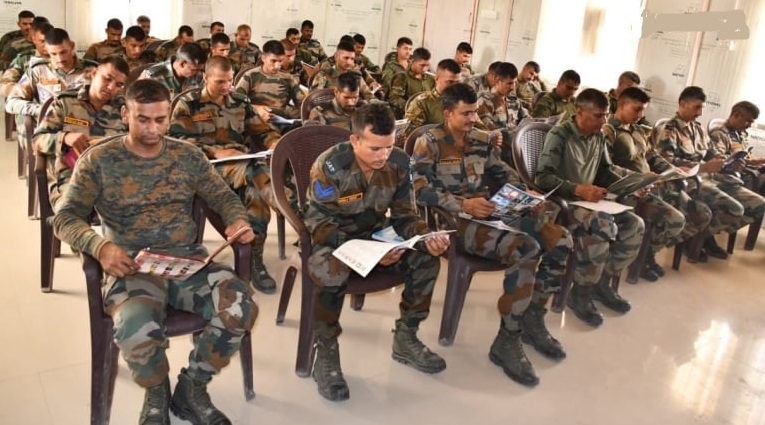 Agneepath Scheme replaced with Sainik Samman Scheme 2024, Defence Minister Rajnath Singh Relaunched Agniveer Scheme
Agneepath Scheme replaced with Sainik Samman Scheme 2024, Defence Minister Rajnath Singh Relaunched Agniveer Scheme
-
 Pakistan Announces 15% Increase in Defence Budget for 2024-25 Amid Economic Crisis
Pakistan Announces 15% Increase in Defence Budget for 2024-25 Amid Economic Crisis
-
 China's Latest DF-31AG ICBM Test: A Strategic Leap in Global Missile Capabilities
China's Latest DF-31AG ICBM Test: A Strategic Leap in Global Missile Capabilities
-
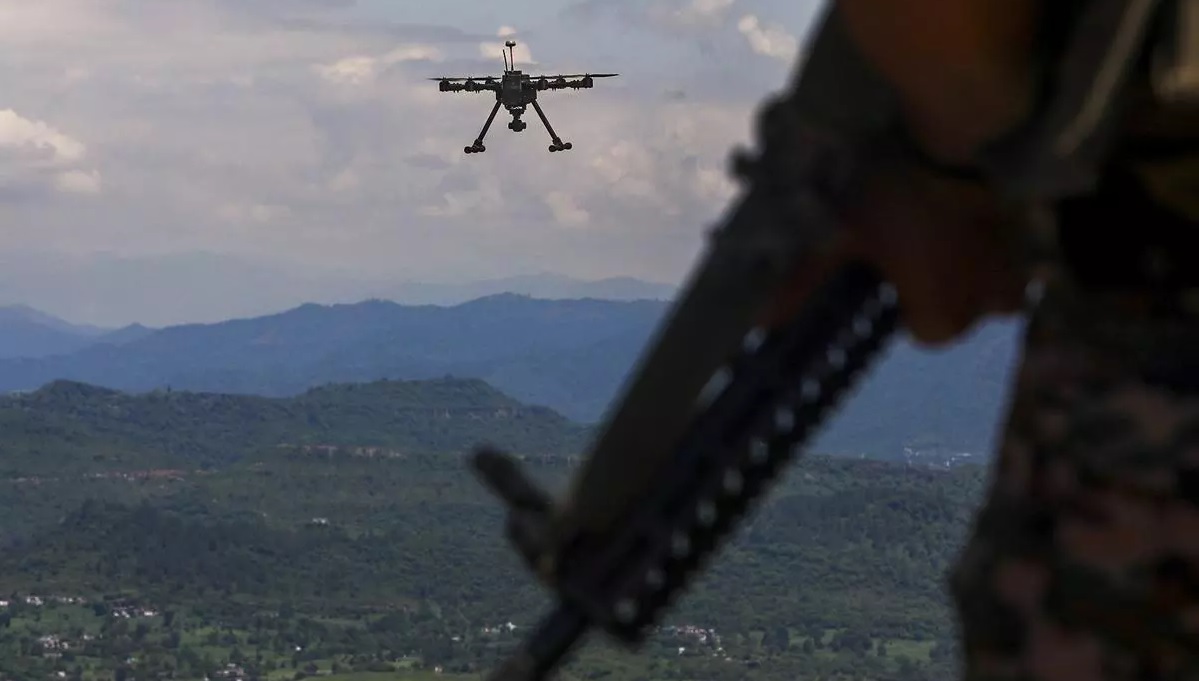 India's Defence Ministry Warns Against Chinese Parts in Military Drones Amid Security Concerns
India's Defence Ministry Warns Against Chinese Parts in Military Drones Amid Security Concerns
-
 China’s Super Radar Detects Mysterious Plasma Bubble Over Giza Pyramids
China’s Super Radar Detects Mysterious Plasma Bubble Over Giza Pyramids
-
 India's Indigenous Kaveri Engine Program with New Focus on Thrust and Performance
India's Indigenous Kaveri Engine Program with New Focus on Thrust and Performance
-
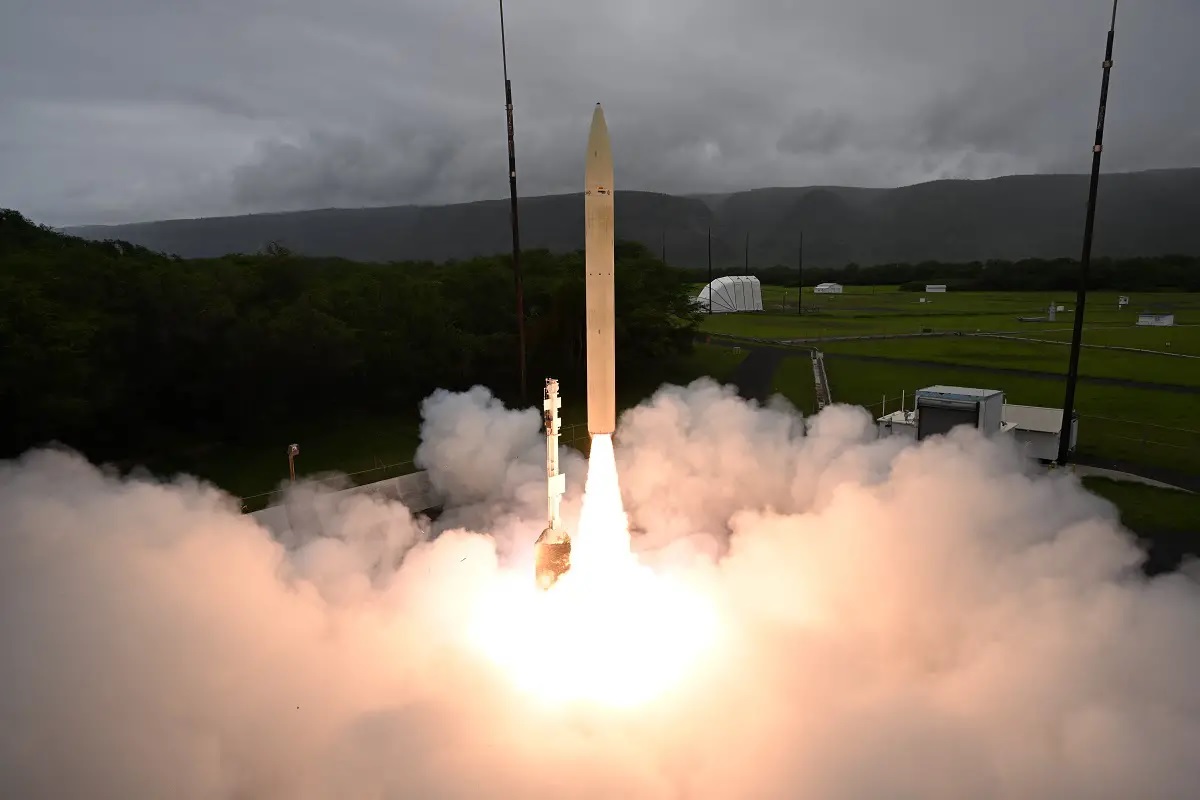 Successful Hypersonic Missile Test by U.S. Department of Defense
Successful Hypersonic Missile Test by U.S. Department of Defense
-
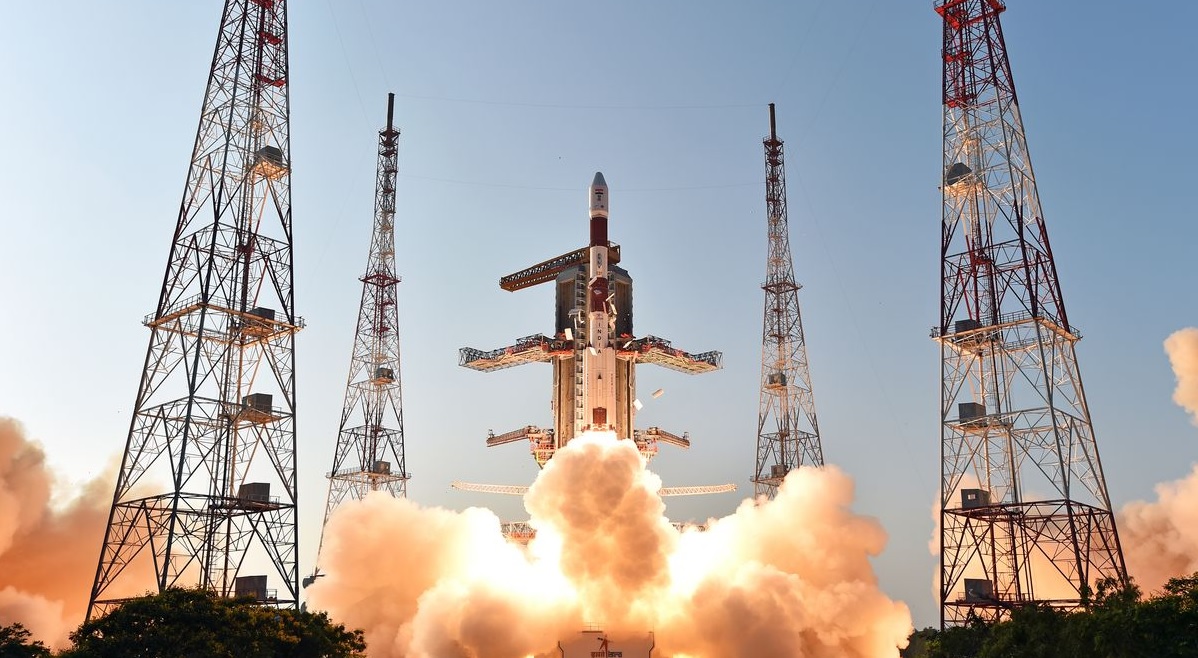 Isro Draws up Ambitious Plan for 2024, says will Launch at Least 12 Missions
Isro Draws up Ambitious Plan for 2024, says will Launch at Least 12 Missions
Top Trending in 4 Days
-
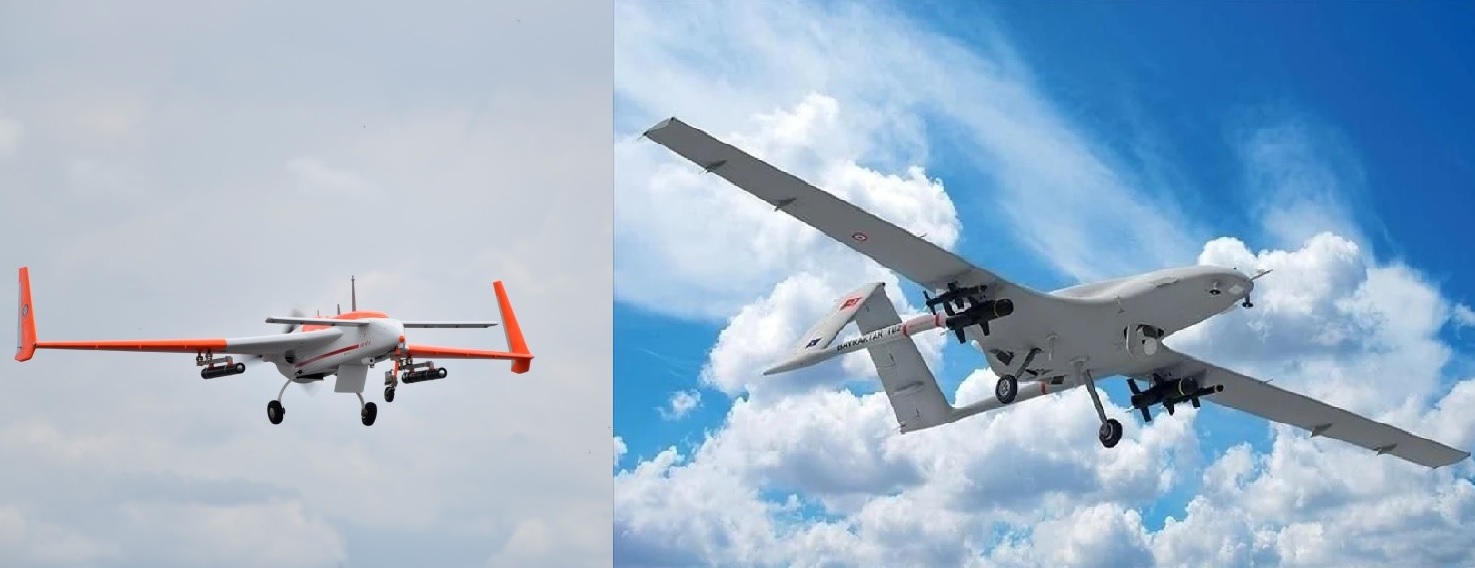 SRUAV-Weaponised vs Bayraktar TB2: A Detailed Comparison of India’s and Turkey’s Armed Drones
SRUAV-Weaponised vs Bayraktar TB2: A Detailed Comparison of India’s and Turkey’s Armed Drones
-
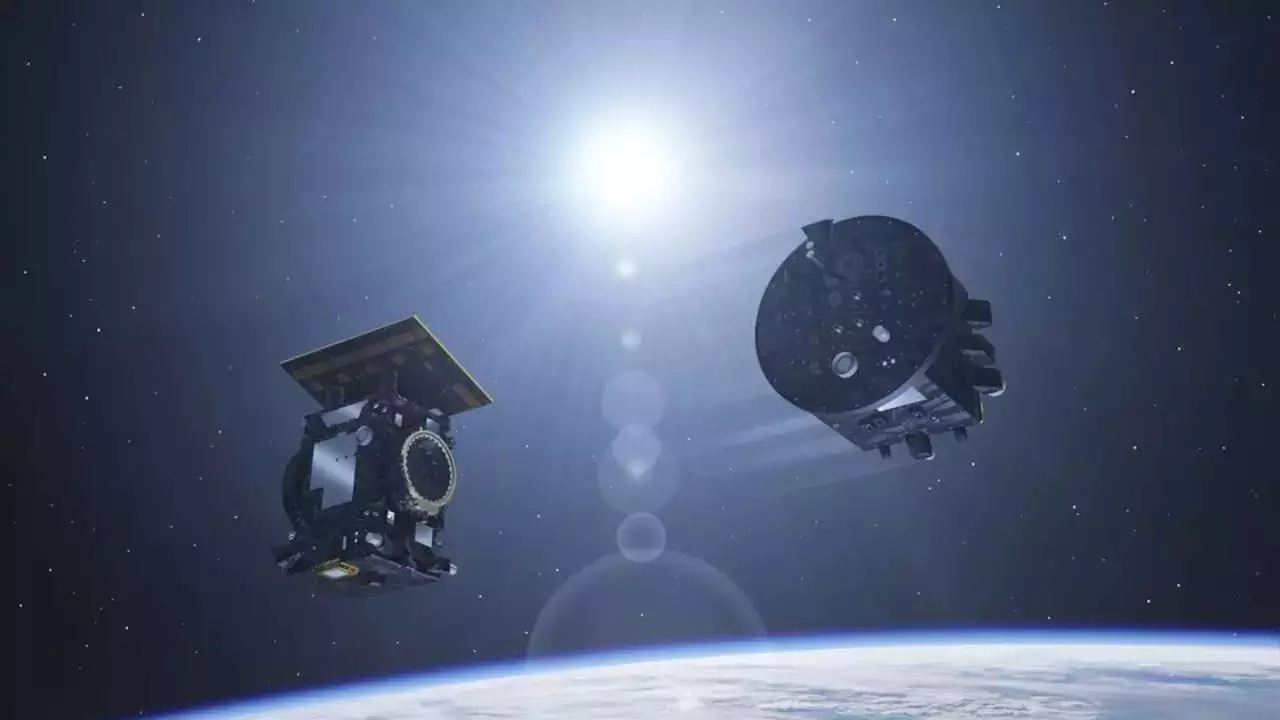 ISRO to Launch Historic SpaDEX Mission on December 30, 2024: India’s First Space Docking Experiment
ISRO to Launch Historic SpaDEX Mission on December 30, 2024: India’s First Space Docking Experiment
-
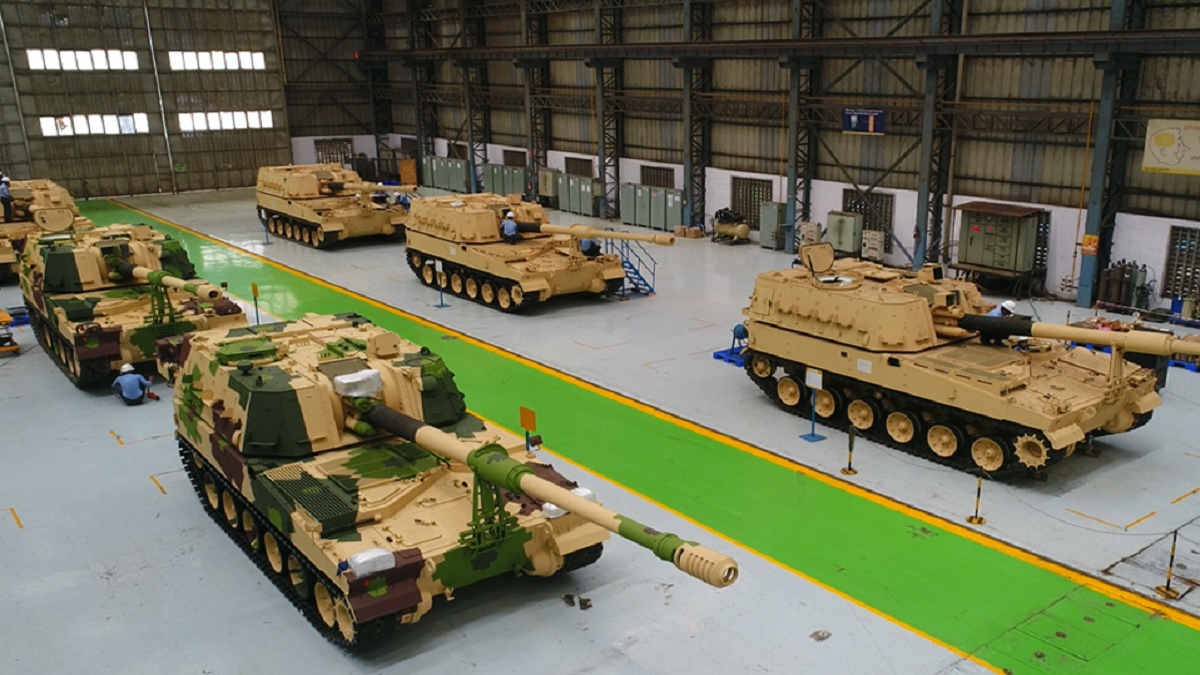 MoD Signs ₹7,628.70 Crore Deal with L&T for K9 Vajra-T Artillery Guns
MoD Signs ₹7,628.70 Crore Deal with L&T for K9 Vajra-T Artillery Guns
-
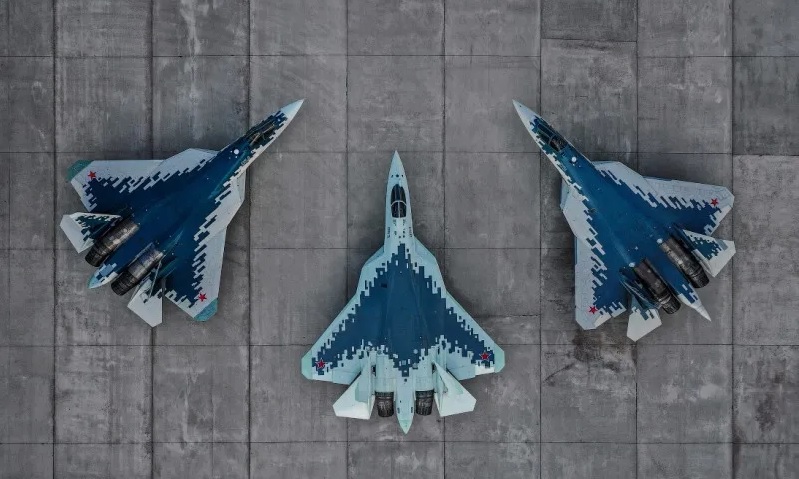 Russia to Propose 70 Su-57E Fighter Jet with AL-51F Engines G2G Deal to India During Putin's 2025 Visit
Russia to Propose 70 Su-57E Fighter Jet with AL-51F Engines G2G Deal to India During Putin's 2025 Visit
-
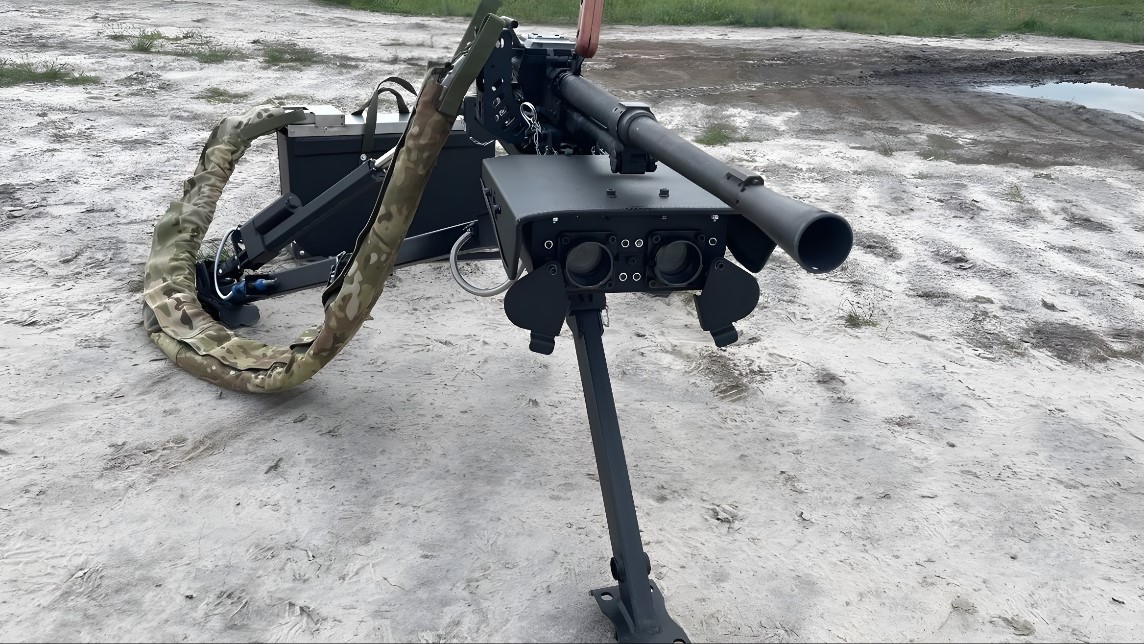 Robotic Wolly Turrets: Ukraine’s New Weapon Against Evolving Battlefield Threats
Robotic Wolly Turrets: Ukraine’s New Weapon Against Evolving Battlefield Threats
-
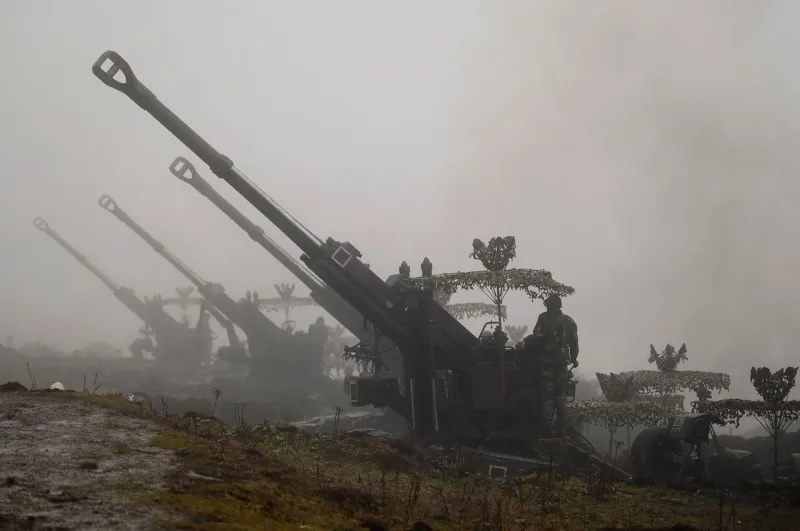 Pentagon Report: China Stations 120,000 Troops, Tanks, and Missiles Near Indian Border
Pentagon Report: China Stations 120,000 Troops, Tanks, and Missiles Near Indian Border
-
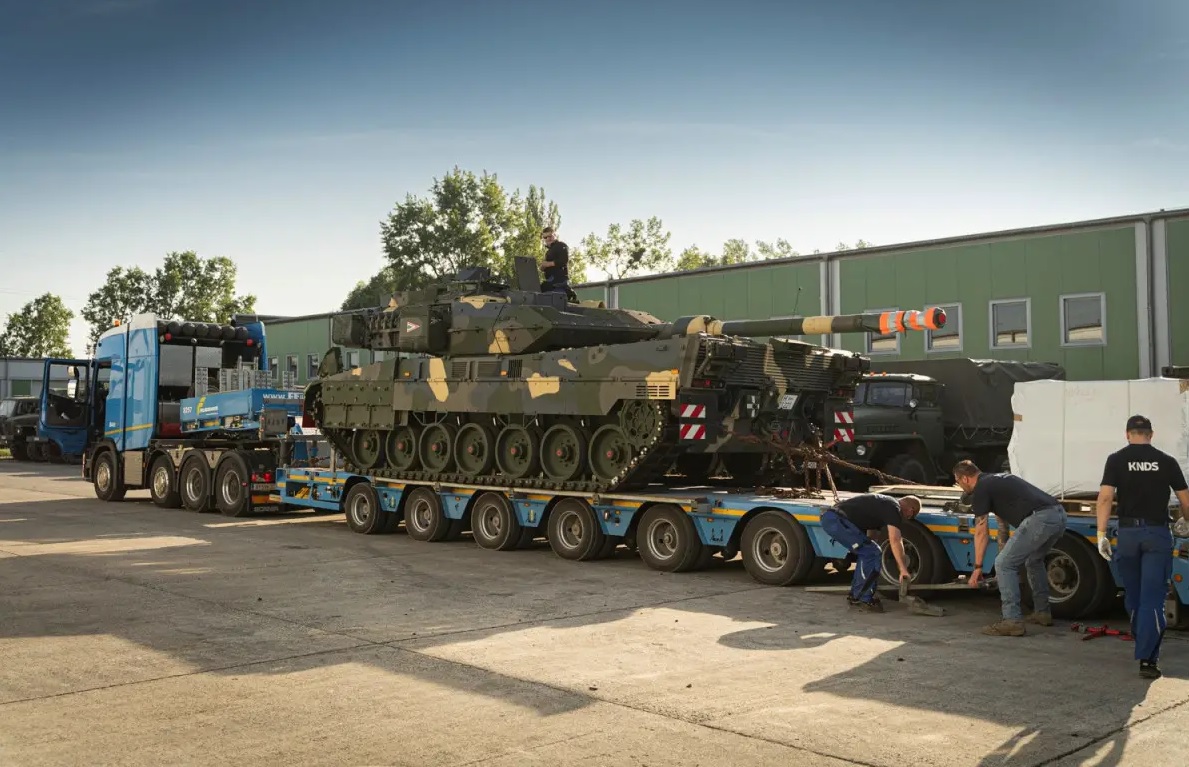 Hungary Receives 31 Leopard 2A7HU Tanks in Military Modernization Push
Hungary Receives 31 Leopard 2A7HU Tanks in Military Modernization Push
-
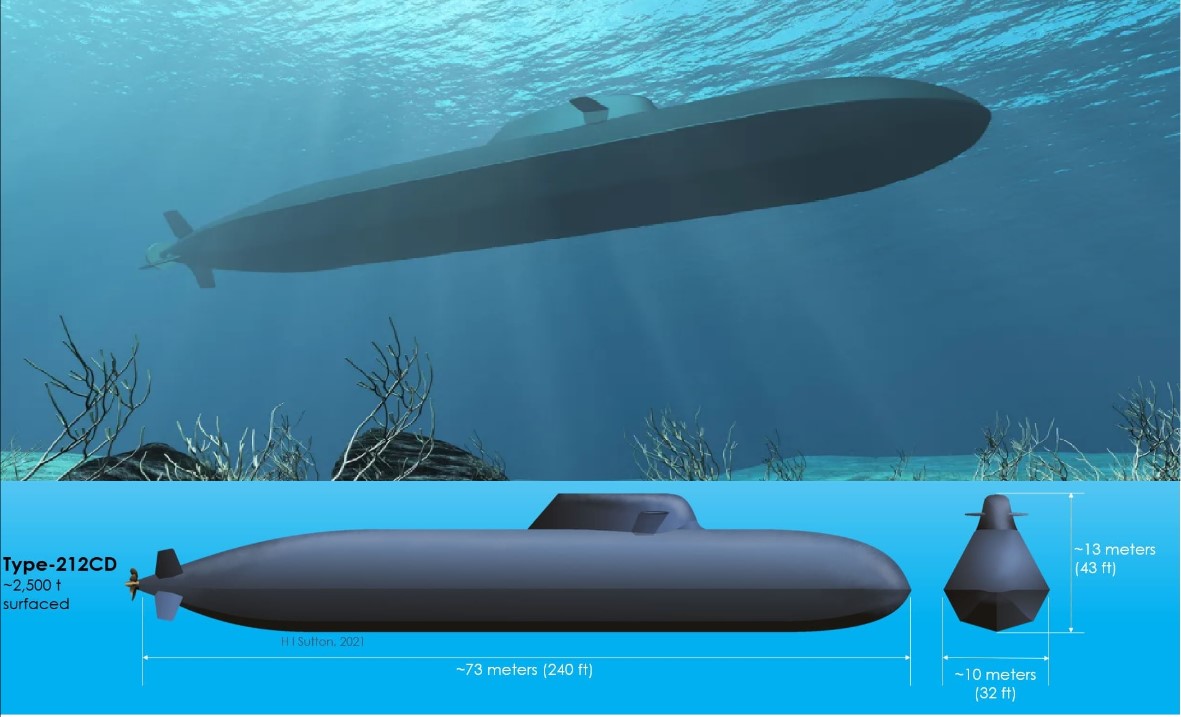 Germany’s Naval Expansion: Bundestag Approves Budget for Four Additional Type 212CD Submarines
Germany’s Naval Expansion: Bundestag Approves Budget for Four Additional Type 212CD Submarines
